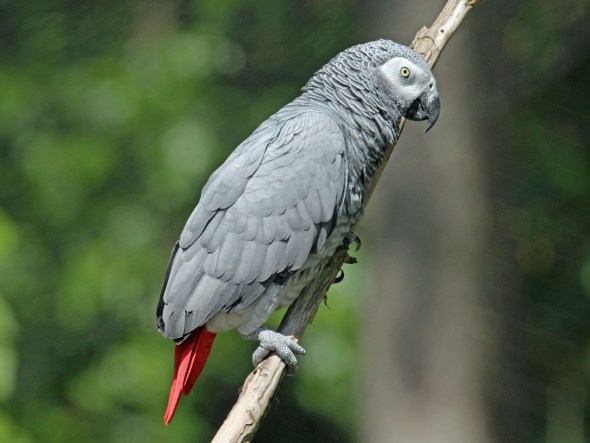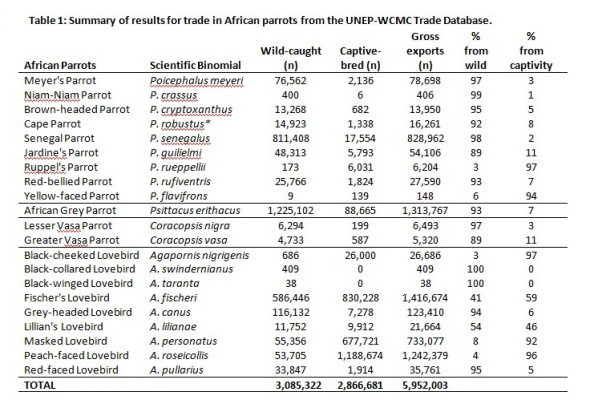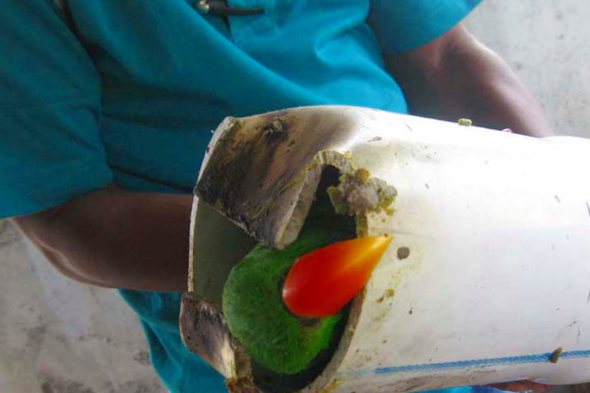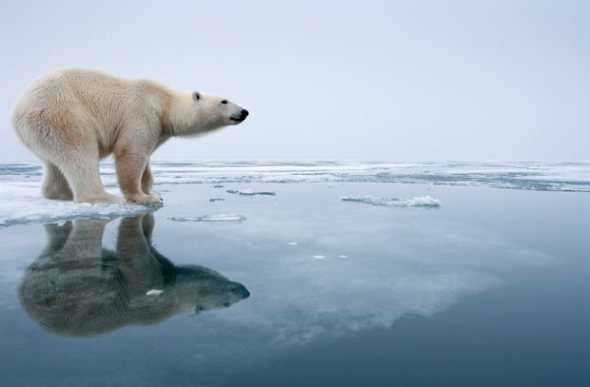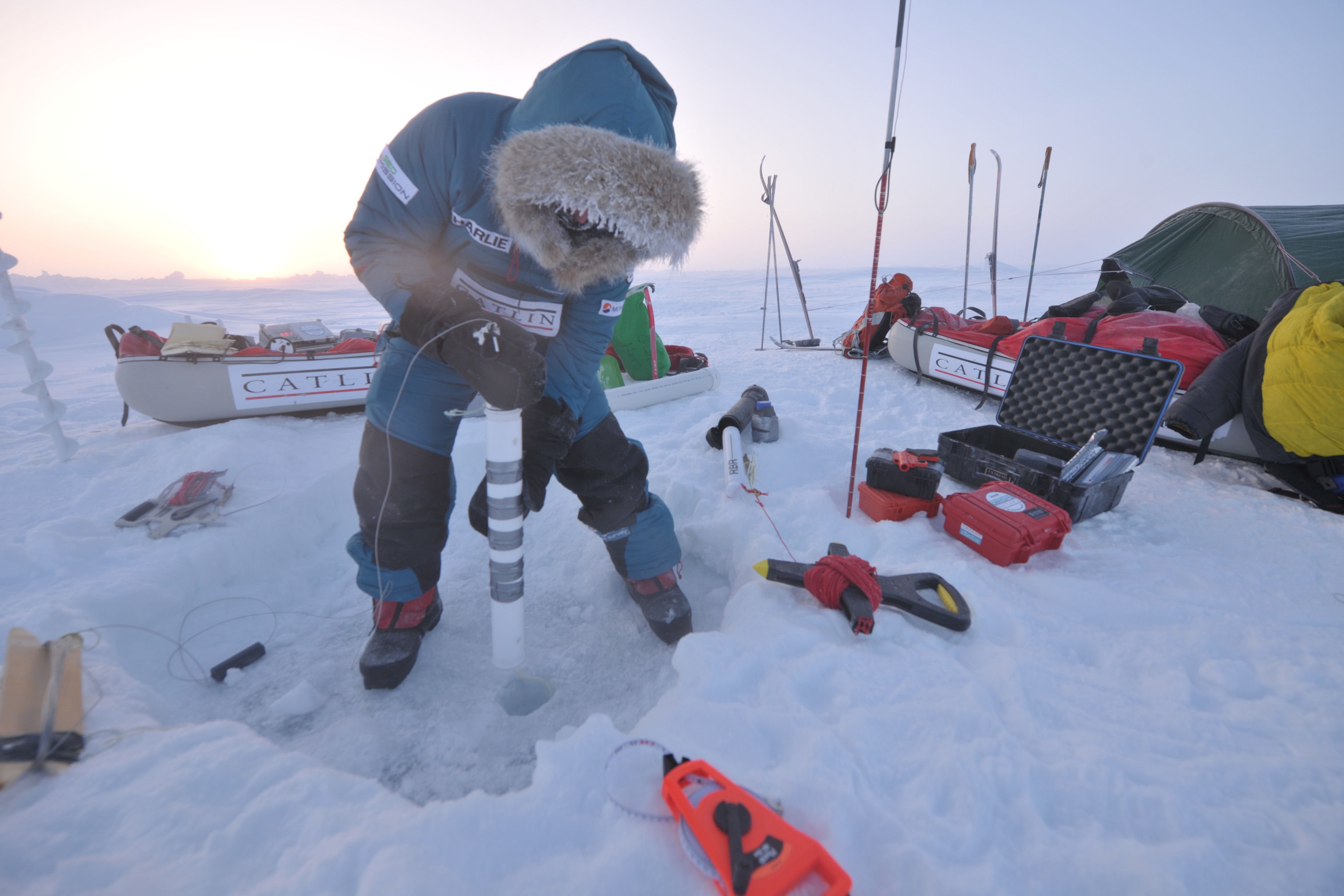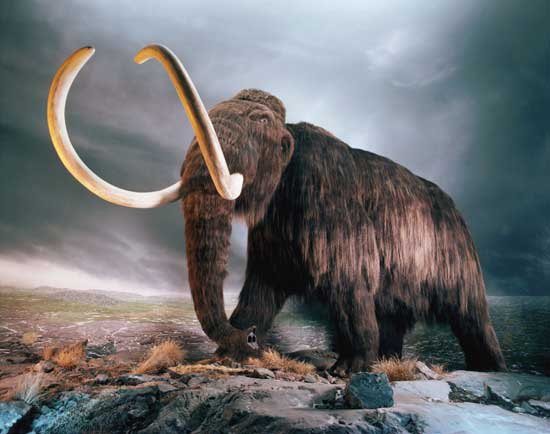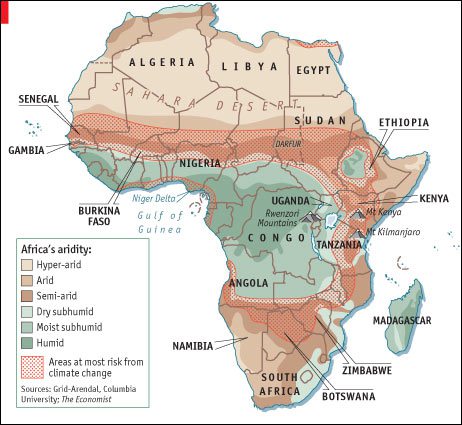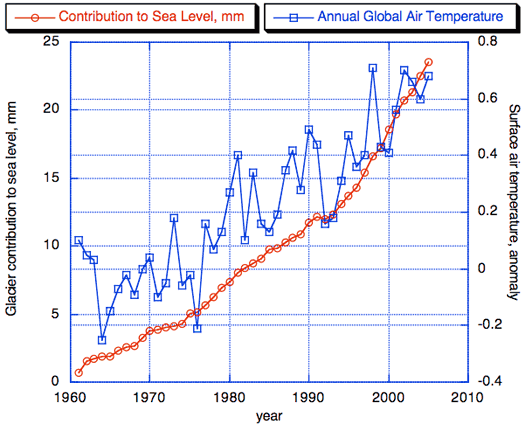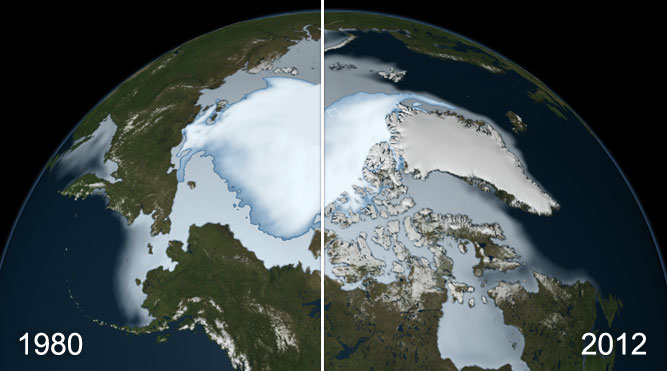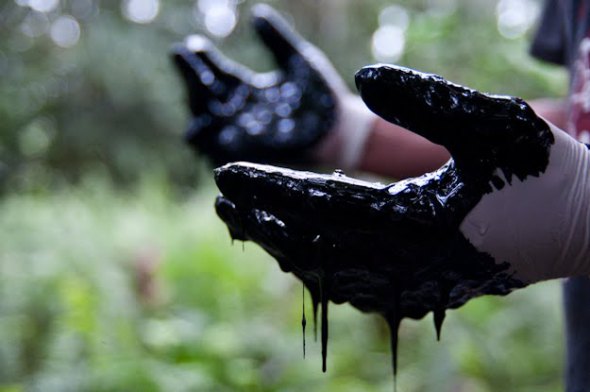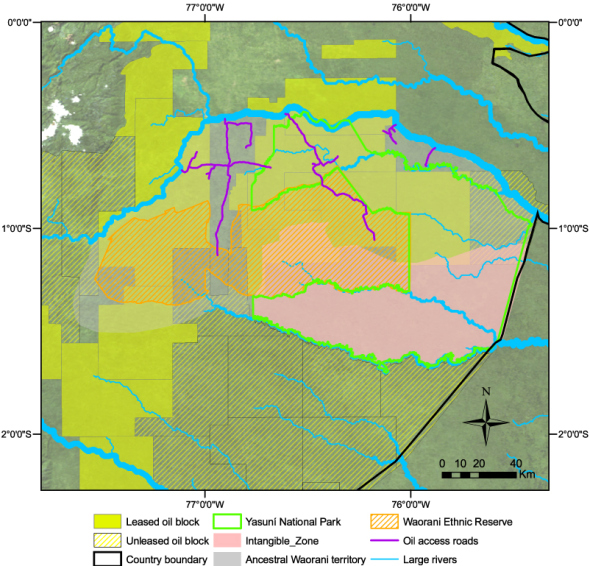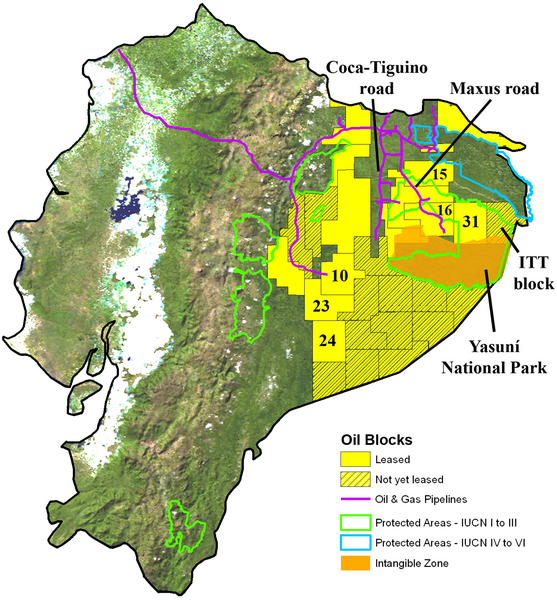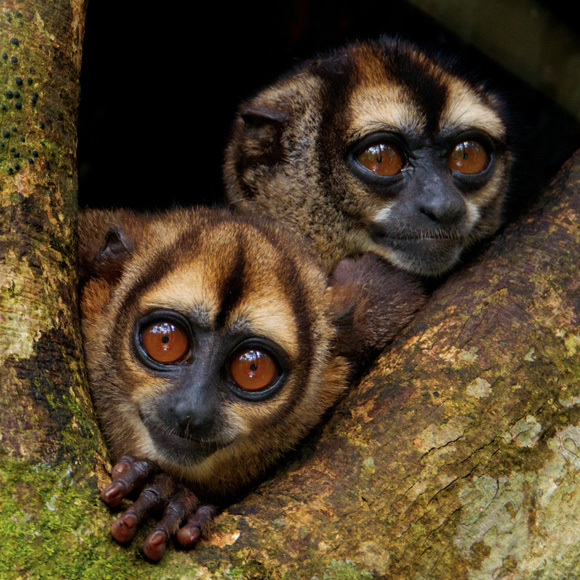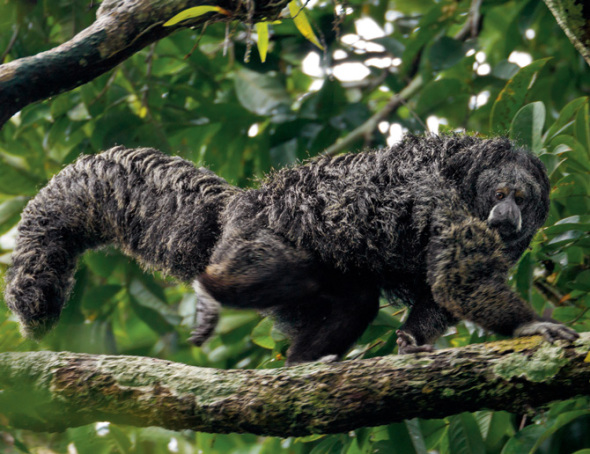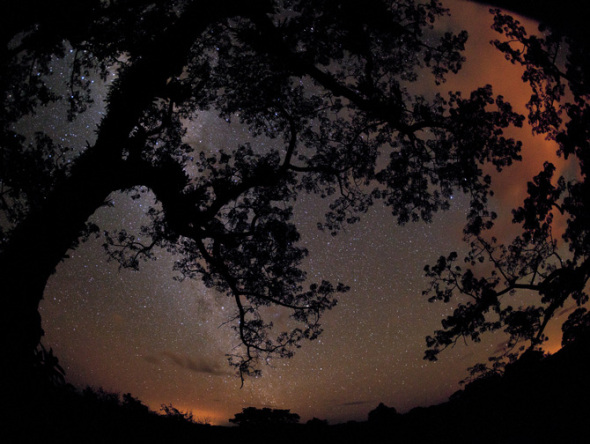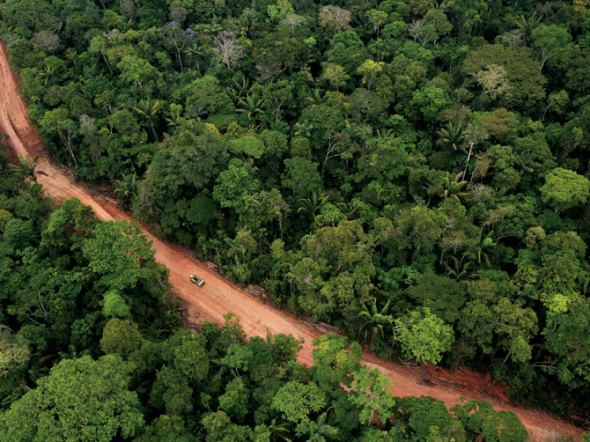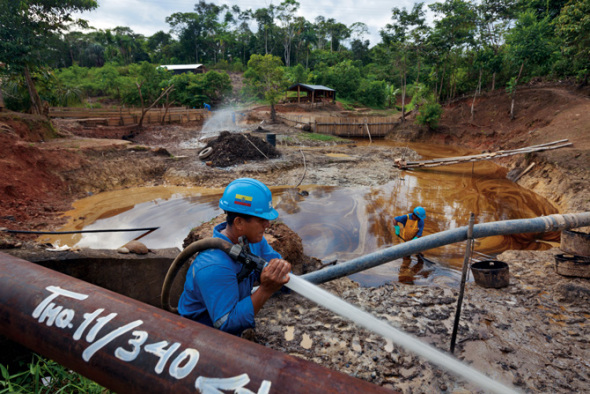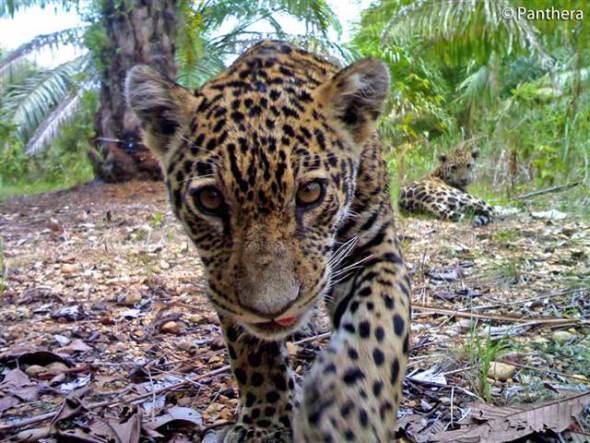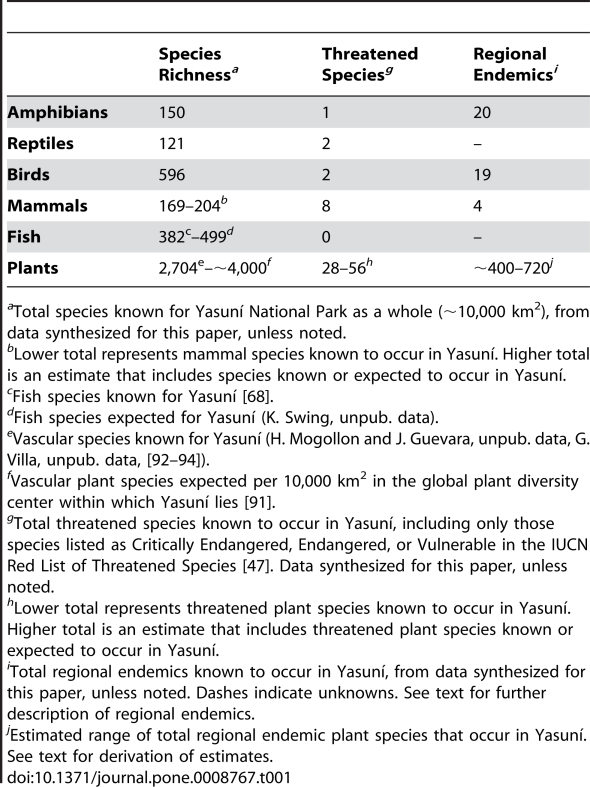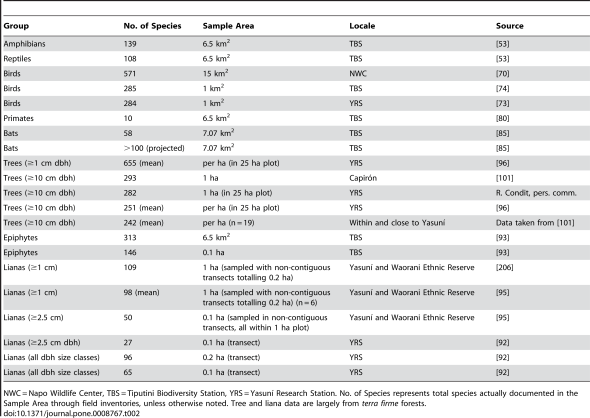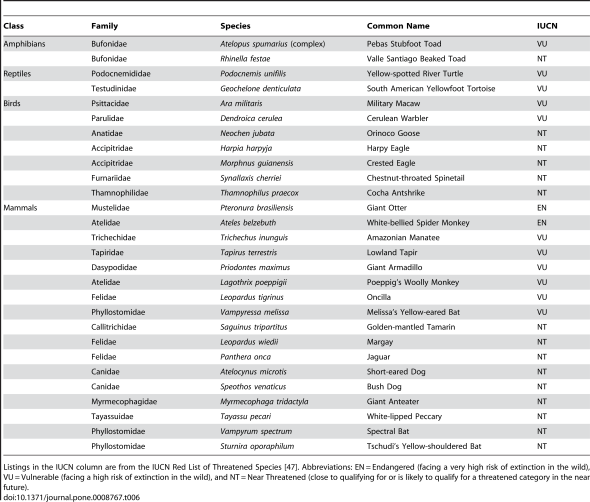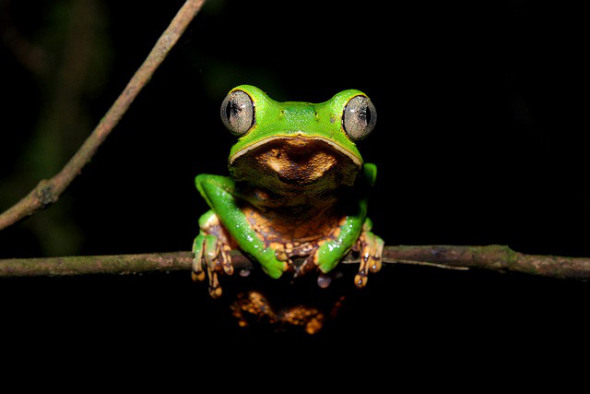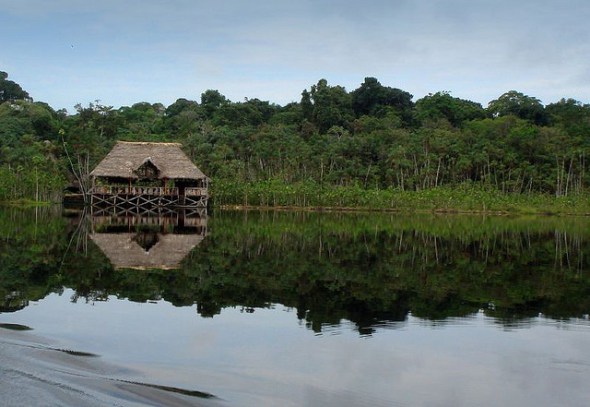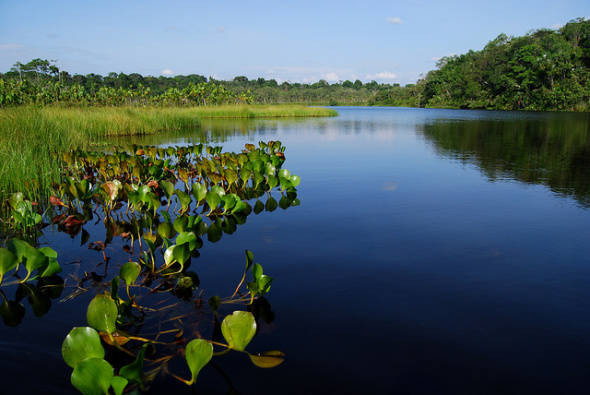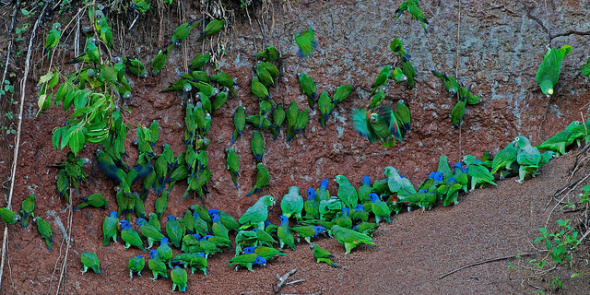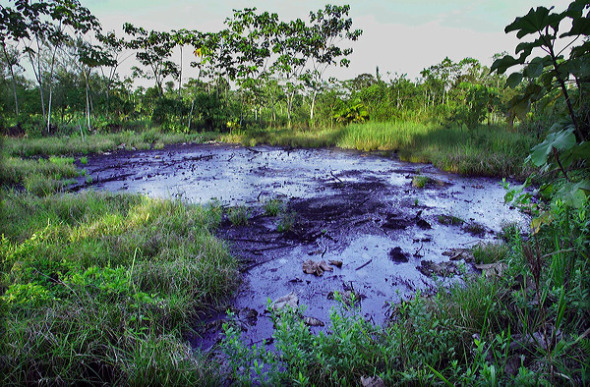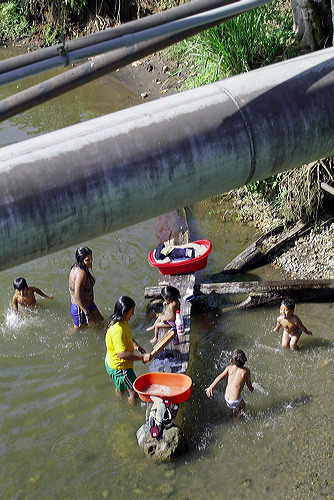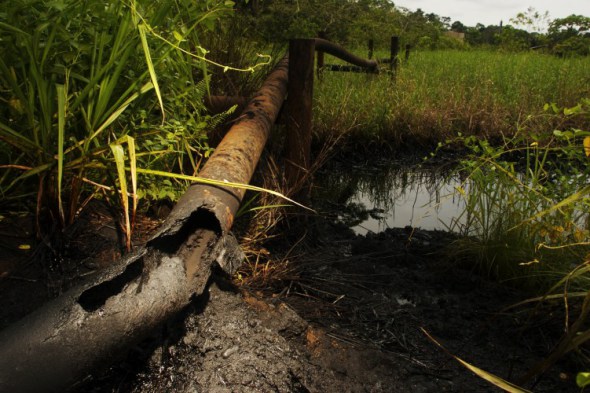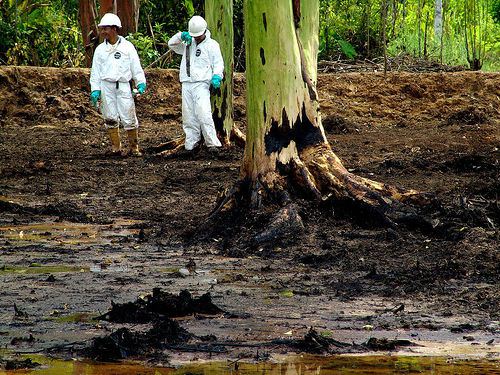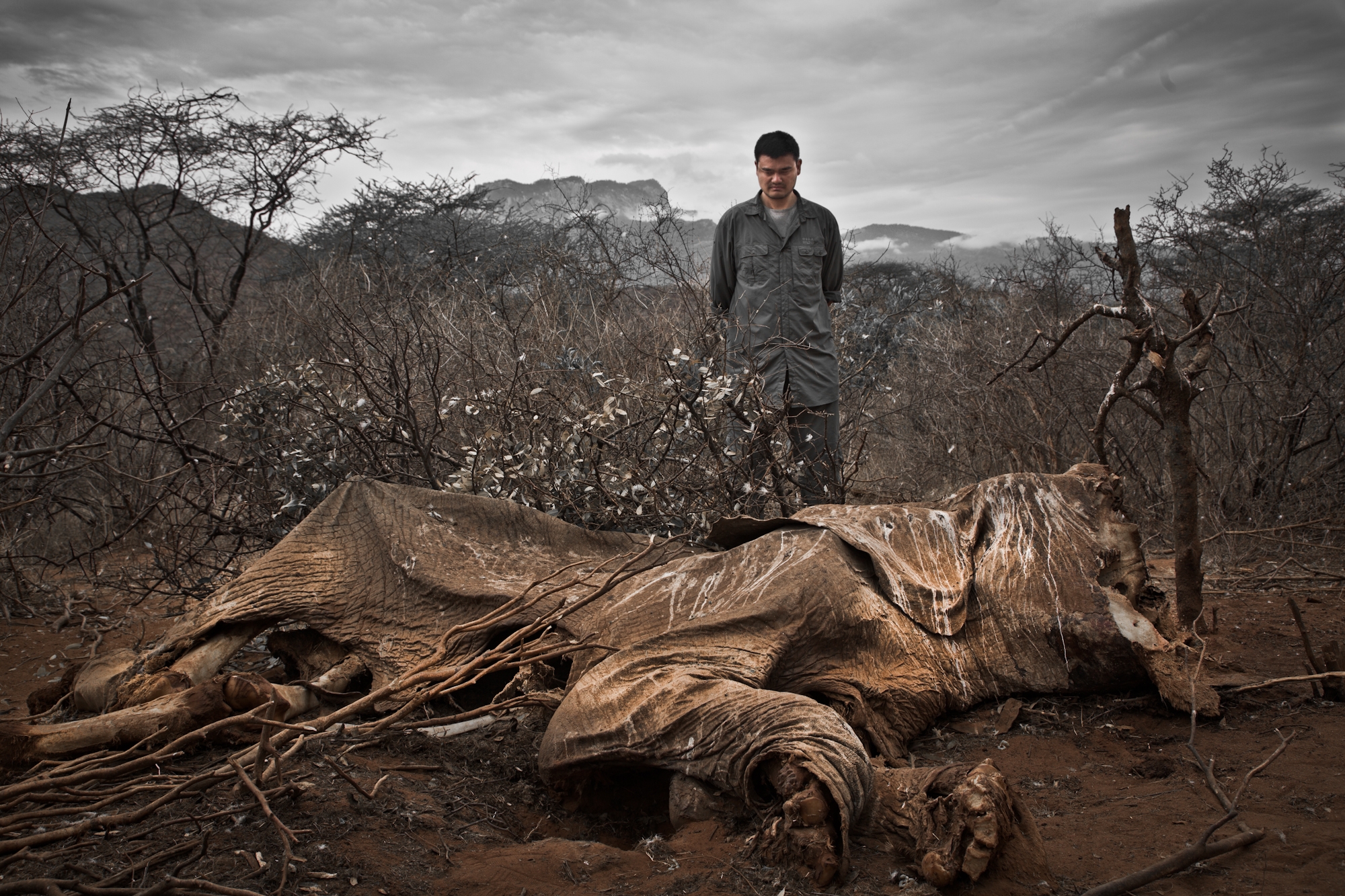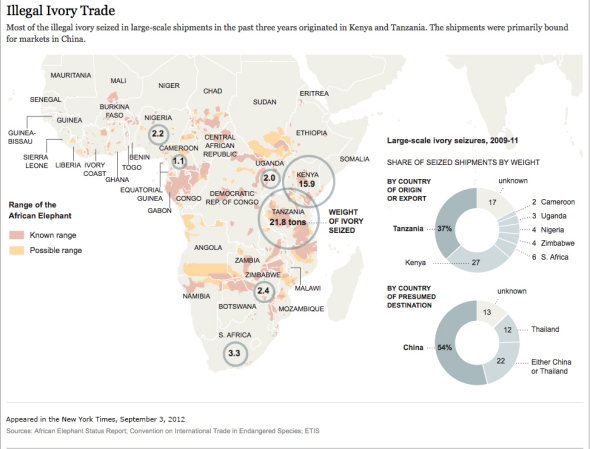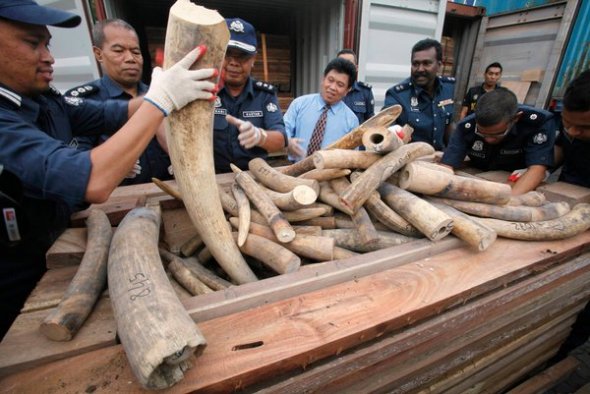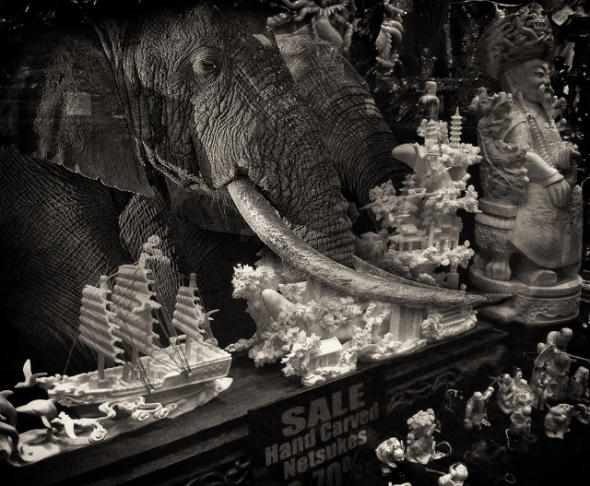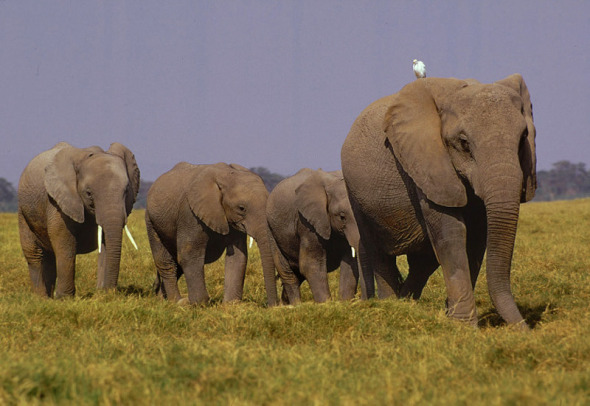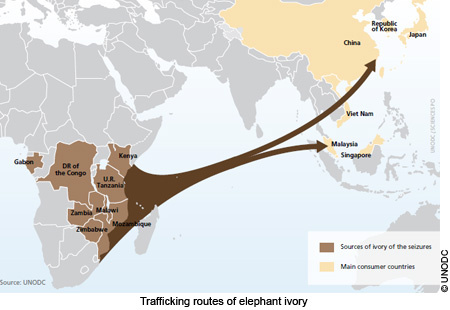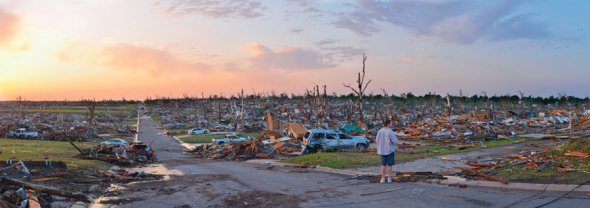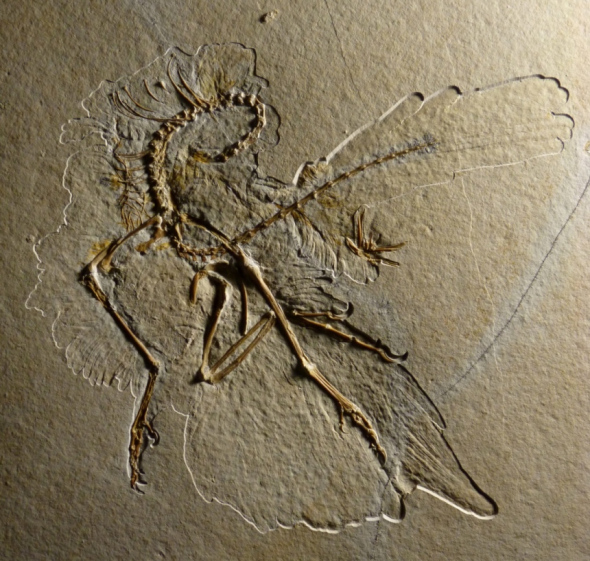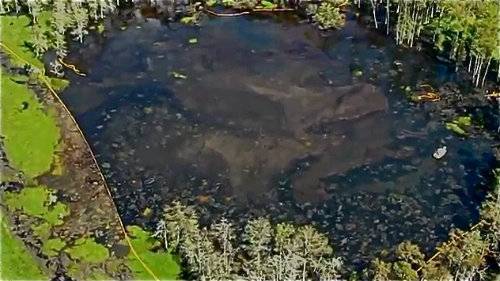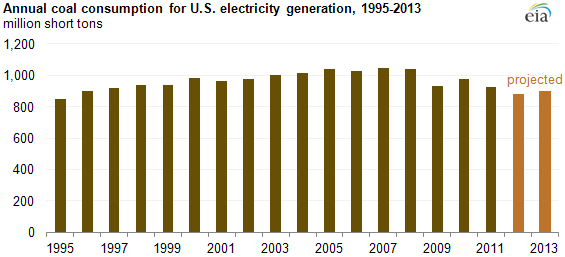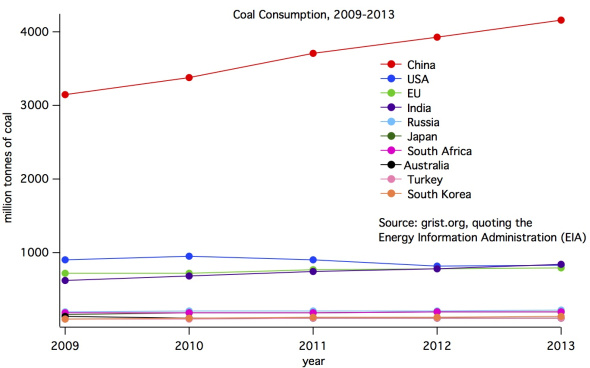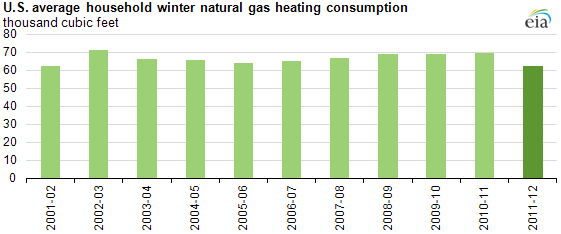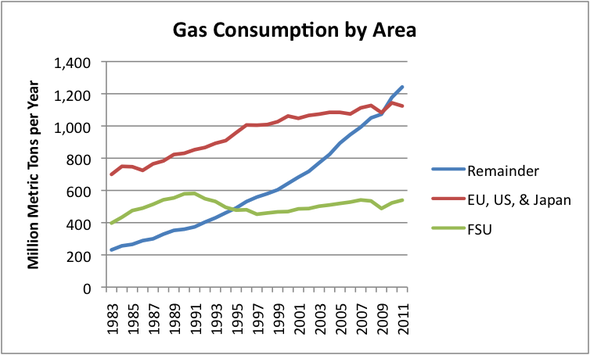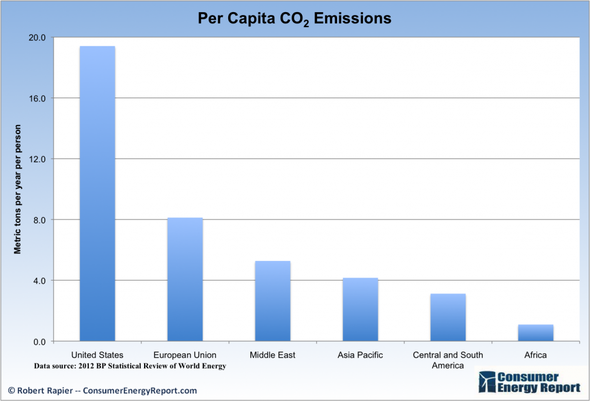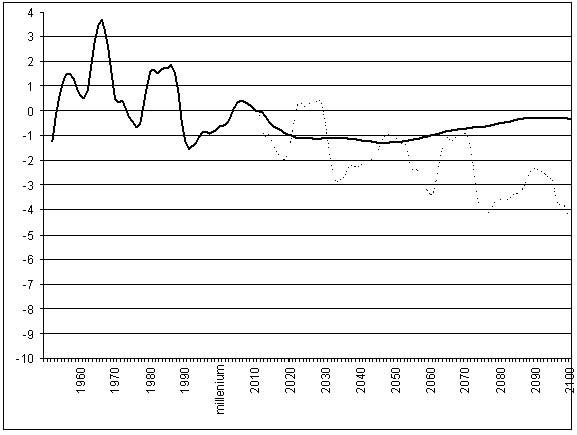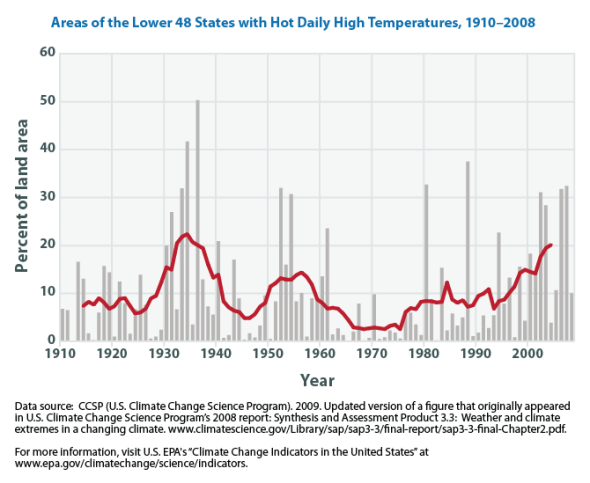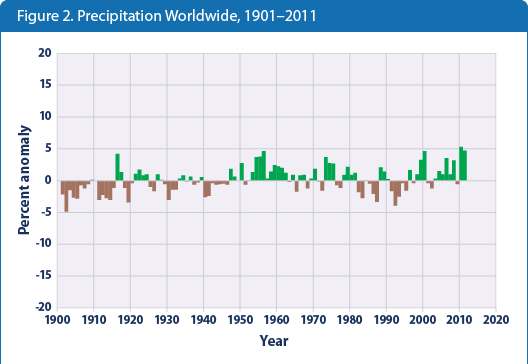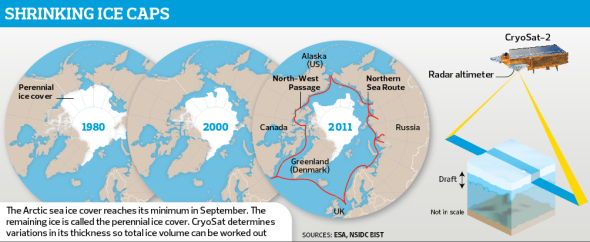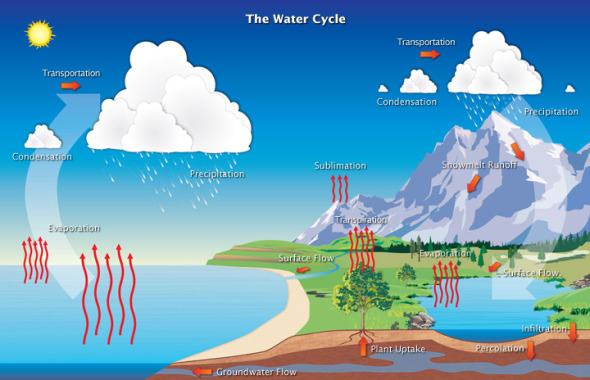Environmentalism chapter 5 - Tigers under threat
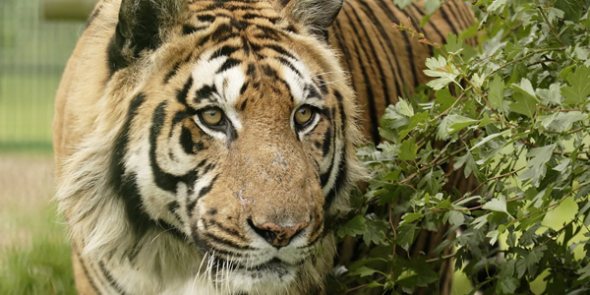
Bengal Tiger - Panthera tigris
The Tiger Panthera tigris the king of the jungle, a stunning species of “Tigers” that are now in serious need of preservation to keep it within the extant centuries to come and not the extinction era.
The Tiger species is the largest of all the big cat species standing at some 11-11.5 feet tall it’s regrettably the most endangered species out of all the wild cat species. Located mostly in east Asia, Russia, Turkey, Bali, India, it lives within large peat grass lands, dense forest and of course its natural areas in Asia where they are mostly located around and within the Ramin tree, (Gonystylus) areas of Indonesia and Malaysia although populated in India where poaching is rife.
With a total body length of just over three meters the Tiger species where wildly populated all over Asia, mainly in Indonesia, Malaysia, India, Japan, Russia and Belize however there numbers have plummeted to alarming levels. Now for 2013 they don’t even stand at 4,000
Bengals and Sumatrans are not the only species within the “Tigris” sub species that are at risk, the largest subspecies the Amur Siberian tiger Panthera tigris altaica is also critically endangered. There are roughly only 3,200 maximum Tigers left in the wild, that is a total in the last century gone of at least 98.5% of all Tiger species banished from the jungles of which they stalk their prey and rely mainly on sight and sound to hunt making them the most sleek predatory hunting cat that walks the earth. There declining numbers are primarily due to;
Tiger population decline;
- Habitual destruction
- Deforestation
- Palm oil and pulp and paper trade
- Human and species conflict
- Poaching
- Skin and fur trade
- Pollution
- Climate change
- Tropical pet trade
- Bone wine trade
- Snare and Traps
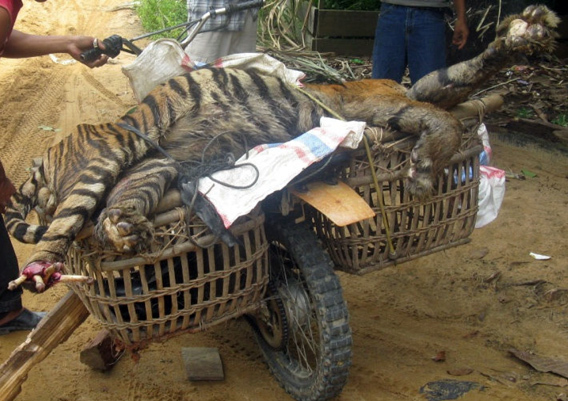
Sumatran tiger killed in an APP supplier’s concession inside the UNESCO Biosphere reserve’s buffer zone in September 2010 © WWF-Indonesia
Read more athttp://news.mongabay.com/2013/0110-dead-tigers-dead-people-sumatra.html#pDHT4oz1xagcoFmG.99
Asia Pulp and Paper we are working to shut down and hold accountable for their destruction of the Sumatran Tiger and Orangutan species. You can help by signing the petition simply by clicking the photo above to help us and other conservationists now take action against them and shut these criminals down. We don’t want to see more animals die as of over consumerism. We have the complaint and papers logged we just need the VOICES. PT KAL are also on our list, of which BOTH companies are listed on the RSPO and both have American owners.. Thanks “America for not caring”
One cannot just blame the poacher with regards to the copiously decreasing numbers of all Tigers although poaching is a contributor one must remember that “humans” that are not even living within the same continent’s as the Tiger species are also contributing to the callous destruction of the Tiger and it’s habitat due to obsessive over consumerism of paper, wood furnishings, to purchasing of foods that have “non-sustainable palm oil” within the product and “sustainable palm oil”.
The sustainable palm oil trade is nothing but a governmental and industrial lie that pushes you in to purchasing more “sustainable” products and “recyclable paper”. Does the industry explain to you though that purchasing of recyclable and sustainable goods is at an all-time high of such sustainable food, paper and wood products? No it lies to you or just stays silent.
With over obsessive consumerism being one of the massive problems why Tigers are savagely murdered everyday then unfortunately we will see the last of the Tigers wiped in one to two years because of this growing consumerism demand hence the quote “sustainable productivity lie” that environmentalists have tried to explain to you for many years now that’s killing the Orang-utans of too due to what you believe is “safe green living and purchasing”.
Excluding climate change vastly in chapter 5 it’s now down to all of us to cut our massive intake of goods and reuse more within the “home” instead of just sending goods to be recycled we now have to “reduce as much as we can” which in turn then decreases deforestation = less habitual destruction that keeps the Tiger species within its natural habitat thus decreasing human species conflict and lowered species birth rate of which the Tiger species normally gives birth to 3-5 cubs a year on average.
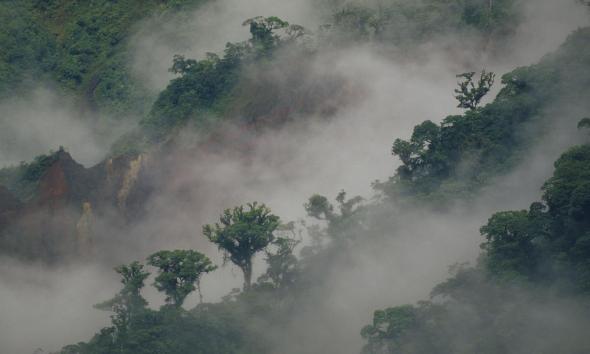
The Tiger species that’s mostly populated to Asia now lives in dense forestry and high grass lands pictured above. Sadly this is under threat with over twelve x football sized pitched sized forests felled a day the Tiger stands no chance. Human and species conflict is common because of this, regrettably the Tiger pays with it’s life which is a sad yet common fact of life that humans around the world are playing a part in with many not even knowing what their habits are causing..
Common knowledge now states the industry cannot keep up with the high demand for “recyclable products”, so to stay with the demand the logging industry then uses more “worked” land over again to non-worked agricultural land.
Commercialisation and massive want for more “recyclable goods” because we believe that we are doing the correct thing by purchasing only recyclable products has then the knock on effect as it would with the non-recyclable industry.
The three R’s is what we at International Animal Rescue Foundation © “promotes” wisely of which one cannot just practice one, and not the other two, by simply using the “recyclable” option and not concentrating on the other two most important factors then this will push the demand up equalling more deforestation. With illegal logging also on the increase then the circle of destruction spirals out of control.
Pollution is also a massive benefactor that is decreasing Tiger populations due to green land forest destruction that equals lowered birth rates, and eventual death. It’s been widely discussed now within our news journal and many other environmental columns that pollution is at a massive high which again is due to over commercialisation and demand. But how does pollution affect the Tiger species?
Air pollution does not only damage the air it also damages living environments on the Earth’s surface and their inhabitants. Plants and animals are harmed by air pollution. Sometimes it is the pollutants themselves that cause damage. Other times pollutants combine and change the resources that plants and animals depend upon such as water, soil, and nutrients. What types of pollutants are damaging this sector that the Tiger lives within though?
Air pollutants called chlorofluorocarbons (or CFCs) destroy ozone molecules in the stratosphere. This has left places in the layer where the ozone is thin. These areas of thin ozone are called ozone holes. The ozone layer, located in the stratosphere layer of Earth’s atmosphere, shields our planet from the Sun’s ultraviolet radiation.
Ultraviolet radiation causes skin cancer and damages plants and wildlife. In recent decades the number of CFCs released into the atmosphere has decreased significantly due to an agreement between the nations of the world called the Montreal Protocol.
Although it takes a long time to see the impact, the ozone holes might someday be smaller. CFCs cause massive damage to the earths wildlife population as of climate change deterioration, damage to tree’s and lower canopy green forestry land that the Tigers desired “prey” rely on which then forces the Tiger to move on mostly to human populated areas thus causing human species conflict. The Tigers prey I have listed below within the few paragraphs on pollutants.
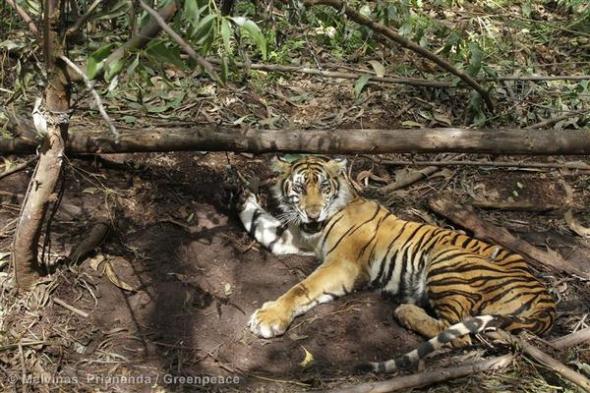
Sumatran and Bengal Tigers are regularly caught in snares and traps set by company paid locals to keep their workers safe that feed the American and European market with pulp, paper, palm oil and wood.
Tropospheric ozone harms living life forms, Ozone molecules in the troposphere damage lung tissues of animals and prevents plant respiration by blocking the openings in leaves, called stomata, where respiration occurs. Tropospheric ozone harms the plants that the prey of the Tiger feeds on thus decreasing again food intake, lack of sufficient prey food intake then kills or forces the animals out of their natural habitat.
Acid rain kills trees and harms animals to heavy industrialised acidic rain that is high in industrialised areas of the forests destroys the leaves of plants and trees without a doubt. When acid rain soaks into the ground, it can make the soil unhealthy for many living species including the Tiger species and its prey. Acid rain also changes the water in lakes and streams, harming fish and other aquatic life.
The short hand documentary shows what we have al known in the environmental world for many years, what is most concerning though is that there are more Tigers in American homes then there are “in the wild” at a rate of over 10,000 (estimate) The tropical pet trade must END now.
The Tiger species has a preference when hunting of which it hunts the Llamas a “type” Equine species however (not Equine related) that has more or less the same skeleton structure but very poor manoeuvrability in the dense jungles hence why the Tiger hunts the Ungulate species that’s relatively easily hunted that can keep a family of mother and cubs living for up to 3-4 days due to high contents of meat and meat saturation fat levels from the Llamas.
The Llamas feed on mainly grass, shrubs, and lichens. Lichens are earth’s first moss plants that grow on rocks and wood. Llamas are herbivores, so pollutants are a very big problem when they are destroying the Tigers natural habitat meaning its hunting grounds. The Tiger then has reduced prey as the Llamas are forced to move on to fresh pastures green which the Tiger cannot as living in such open areas that the Ungulates species can thrive in makes the Tiger more noticeable to its prey thus reducing natural predatory hunting.
Wild boar, buffalo, water buffalo, primates, hares, antelope and specie deer’s plus many more species that the Tiger “species” also hunt can and are effected by pollutants thus displacing the Tiger and it’s prey so yes indeed pollutants are a very big problem along with deforestation, and the humans massive demand for more “recyclable” products of which there is very little reusing and reducing evident in the modern world that we must ALL now start taking notice off.
Reported in this week’s weekend Leader 17th January 2013 and by WWF (World Wild Fund for nature) poaching of the Tiger species was said to have decreased, which is good news, or is it?
Sumatran and Bengal Tiger populations have decreased so dramatically that poachers simply cannot locate these beautiful kings of the jungle anymore which is good but sad news.
Taking a brief look into figures here and history we can see an awfully shocking trend that one must “not” just blame as quoted on the poacher. We all have to except the blame as explained above regarding pollutants, over commercialisation and obsessive consumerism.
The tiger population dropped over the past 100 years from an estimated 100,000 in the 1900’s to only 4000 in the 1970’s. A concerted effort by wildlife protection groups in the 1970’s halted their rapid demise and the global population of tigers in the wild has grown modestly to around 6000 at the turn of the century with great thanks to then Indian Prime minster that launched a massive operation to cease hunting that was being fronted by the illegal poaching industry, everyone breathed a sigh of relief as the Tiger population then shot back up which hadn’t the Indian president taken action then all Indian native Tigers would have been lost.
Poaching continues to this day though all over Asia and Russia, however. When a Russian poacher can make as much from a single tiger kill as he would normally earn in 6 years, it will take more than words to halt this tragedy it takes “skill and going back to our grass roots to understanding the Tiger and it’s preys natural habitat”. Only then can one preserve the Tiger species.
The range of tigers has changed over the past 100 years. Once roaming all throughout India, Southeast Asia they now only small live in pockets of small natural habitat. Law enforcement has not lowered poaching it’s unfortunately the massive declines in numbers of the Tiger species.
Quote
“In the 1970’s we came dangerously close to losing forever one of the world most magnificent creatures. Poaching, deforestation, and human expansion to pollution brought all species of tiger to the brink of extinction. Indeed, over the past centuries, 3 of the 8 sub-species that existed became extinct the Caspian, Javan and Balinese tigers. Today, we are by no means out of the woods. All remaining sub-species of tiger are endangered, making the tiger species as a whole nearly extinct”
The news report of which I have copied below from the Weekend leader wrote 17th January, quote;
In cheering news for wildlife conservationists, tiger poaching dropped nearly 60 per cent in 2011 as compared to the previous year, though it continues to pose a major threat to the survival of the big cat in the country, a leading NGO said. According to the Wildlife Protection Society of India (WPSI), 13 tigers were hunted last year as compared to 30 in 2010 - a decline of 57 per cent. The bodies of poached tigers, seized bones and skins were computed to arrive at the figures.
Adding other factors like road accidents, infighting, fighting with other animals, electrocution, found dead, and rescue and treatment, the overall toll rises to 61. In 2010, it was 58. However, top on the list of WPSI’s tiger mortality is the found dead figure, 21.
The toll from infighting was the same as that of poaching. In the previous year, 10 tigers died in such fights. “There has been definitely a decrease in poaching cases in 2011 compared to 2010, but it does not mean poaching has stopped,” said WPSI’s Tito Joseph. This could be “due to effective patrolling strategies adopted by the tiger authority (National Tiger Conservation Authority) in coordination with other agencies,” Joseph said. The illegal wildlife trade continues to be a major threat to tigers. Joseph said traders were offering huge amounts of money in black markets for tiger body parts.
“Recently trade activities were detected in Vietnam and Cambodia. The threat is not only from China (a known hub for such trade) but also from Southeast Asian countries,” he said. “We need to be vigilant 24 hours 365 days,” Joseph said. “Wildlife articles always have a very premium market and prices are not going to come down easily,” says U.C. Tiwari, wildlife warden of the Corbett National Park, Uttarakhand. The 1,200-plus sq km Corbett sanctuary is one of the 39 tiger reserves in the country.
The poaching figure only reflects the cases that come to light and it may not truly reflect the ground condition, said Tiwari. He warned that the situation could turn alarming if the mortality rate of adult tigers rises. “Because adult tigers don’t die easily… there has to be some extraordinary circumstance.” According to WPSI, of the 21 tigers found dead in 2011 many were adult tigers. In 2010, 15 tigers were found dead.
“The fact that many poachers are now lodged in jails has surely contributed to the decrease. They are still cooling their heels in different jails,” the official added. Acknowledging this, Ashok Kumar, an eminent tiger conservationist and vice chairman of the NGO Wildlife Trust of India, said poaching has reduced considerably as many poachers were jailed. “Our lawyers fight against them in court so they do not come out of jails.
“All Alwar (Rajasthan)-based poachers are today in jails,” said Kumar, referring to a gang blamed for extermination of tigers in the Sariska reserve, one of the two tiger sanctuaries in the state.
Kumar has been at the forefront of the fight against poachers and illegal trade of wildlife for over two decades. He was the first director of Traffic India, which studies wildlife trade.
Rajasthan is also home to the famed Ranthambore National Park. Sariska currently has five tigers, all shifted from Ranthambore as part of a government attempt to repopulate tigers in the reserve. The latest official tiger census report released in March 2011 estimated about 1,700 tigers in the country. – IANS
Reports for 2012 show other alarming figures though that pinpoint to “exactly what we have been informing the DEA South Africa of and India too” please read the link http://www.guardian.co.uk/environment/2012/aug/20/tiger-population-india-tourism-ban
The Rhinoceros in South Africa when we International Animal Rescue Foundation © started Operation Trojan Horse proved that “tourists where being watched to even “poachers” joining the damn tourists with no one law authority even aware of this.
These alarming finds were sent immediately to the DEA (Department of Environmental Affairs) South Africa and tour guides informing them to keep check of who is actually on their safari tour guides to entering South Africa.
India would ONLY do this IF they knew that poachers where becoming even more brazenly operational and daring by acting as tourists, then giving pin point geographical locations of Rhinoceros crashes hence we now believe 100% with evidence that we have, that the poacher is undertaking the same methods of infiltrating the South African tourists mobile travel safaris in South Africa as they are now in India.
We don’t believe that the poaching has decreased at all because of arrests made and increased patrols we believe that poaching has decreased simply because there are very few Tigers within the wild of which the Bengal and the Sumatran are the sought after Tigers. In an extracted article the following was quoted http://www.wtop.com/41/2968728/World-tiger-population-approaching-possible-extinction
Badaling Safari World - Beijing sell Tiger Bone within the zoo. It’s illegal hence why the permit states dispose of the bones and skin discretely so the government “know this” yet couldn’t care less.The investigation back from 2007-2008 by the EIA clearly shows the laws being broken. The Tigers do not die naturally they are staved to death hence why the large import and export of this illegal liquor, Some Tigers are kept back of which they are force breed. http://youtu.be/Rwv8mCw8JJs
“There are only 500 to 600 Sumatran tigers left in the world, so they hope to breed Kavi with one of the zoo’s youngest females. The zoo only has three Sumatran tigers right now.
In August of 2012 there was an exact number of one thousand Sumatran Tigers Panthera tigris sumatrae so since August and January 2013 “someone is not giving the correct figures out” We knew there was only 1000 left in the wild as of Greenpeace’s investigations into the Ramin tree, palm oil and pulp and paper trade.
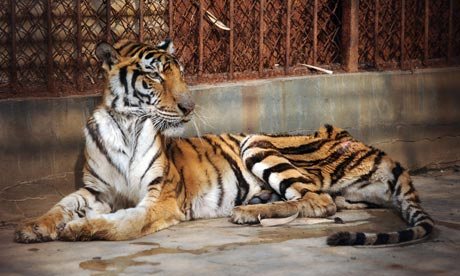
On checking the full story in this zoo it was horrifying, these are protected and endangered species and this is how we treat them. The world has gone insane and sadly there are more zoos in Asia just like this.
With regards to the Bengal Tiger Panthera tigris there are literally 2,500 in the wild to date. The total number of Tigers in the wild that does not include the Siberian equals 3000 to 3100. The Siberian Tiger that’s critically endangered numbers at what some conservationists have quoted without taking into account scientific analysis is 500 – 600 however this is untrue.
Approximately 500 Amur tigers actually survive in the wild, but the effective population is a measure of the genetic diversity of the world’s largest cat. Very low diversity means any vulnerability to disease or rare genetic disorders are likely to be passed on to the next generation. So these results paint a grim picture for the tiger’s chance of survival.
“The findings are reported in the journal Mammalian Biology”
The Amur tiger, or Siberian tiger as it is also known, once lived across a large portion of northern China, the Korean peninsula, and the southernmost regions of eastern Russia. During the early 20th Century, the Amur tiger was almost driven to extinction, as expanding human settlements, habitat loss and poaching wiped out this biggest of cats from over 90% of its range.
By the 1940s, just 20 to 30 individuals survived in the wild. The new study has identified that this recent “genetic bottleneck” - when the breeding population of tigers was so critically low - has decimated the Amur tiger gene pool.
A more genetically diverse population of animals has a much better chance of survival; it is more likely, for example, to contain the genetic resistance to a variety of diseases and less likely to succumb to rare genetic disorders, which can be “cancelled out” by healthy genes.
Scientists in Russia, Spain and Germany worked together to analyse DNA samples from 15 wild Amur tigers in the Russian Far East. They took blood samples from the animals and screened them for certain “markers” - points in the DNA code that show that an animal had parents that were genetically very different from each other.
The results revealed evidence of the genetic bottleneck during the tigers’ recent history, when the variety of genes is being passed on dramatically reduced. Genetically speaking, the Amur tiger has not recovered from this. “Our results are the first to demonstrate a quite recent genetic bottleneck in Siberian tigers, a result that matches the well-documented severe demographic decline of the Siberian tiger population in the 1940s,” the researchers wrote in the paper.
“The worryingly low effective population size challenges the optimism for the recovery of the huge Siberian cat.”
Our total from number count of Tigers from scientific findings, investigations and worldwide knowledge estimates the entire Tiger species to now be under 3.400 and should pollution, obsessive consumerism, increasing commercialisation that increases climate change and impulse purchasing now not reside or drop then the tiger species coupled with poaching “will be extinct in two years or less” and that’s fact, along with that will then follow the Lion, Pangolin and the Rhinoceros species.
Bone wine trade and “skin or fur” trade is also a major benefactor that see’s the Tiger regrettably poached, Tigers are critically endangered and therefore non-tradable, the Asian government know damn well that Tigers are prohibited by International Union for Conservation of Nature laws from being moved or poached, CITES also prohibits such illegal activity of which traders to sellers MUST be shut down, fined and/or prosecuted. Such criminal activity is just ignored though and what part Asia actually play in helping to save any animal after viewing the EIA investigations in to blood ivory is still to be seen.
Be the voice - Help us to shut APP down, they are murderers and environmental desecration experts
The Bird, The Cage & The Choice by Pooja Gupta.

An Indian wildlife production by Pooja Gupta.
The Bird the Cage and the Choice is a small documentary that’s directed by Pooja Gupta an Indian photographer and small amateur film maker that’s documented the avian bird trade both domestic and commercially. Pooja describes in detail here thoughts on the trade and whether it’s an ethical choice now to keep birds confined to cages plus abducting them from the wild then breeding them for sale.
The avian bird trade is a serious problem within the animal smuggling and parts trade of which many avian endangered species are take from the wild of Asian and African forests then transported in the most inhumane conditions, there have been custom seizures in the European Union, Asia and America of birds stuffed in socks within suitcase compartment’s to even transported in “parcels” with no food or water of which mostly when found by investigating custom and excise officers the birds have sadly passed away.
Tropical birds are being captured from the rainforests in order to sell as pets. These birds are very beautiful and colorful, as well as intelligent, and people want to keep them as pets. Without birds in the rainforests, there can be no pollination of plants or spreading of seeds, meaning the end of plant species that rely on certain types of birds. Through evolution the beaks of birds have adapted to be able to get into the various shapes of different plants. If these birds then disappear, plants will not survive. Migratory birds and the survival of birds and animals already living in the rainforests will also be threatened.
Tropical birds are very desirable as pets and people will spend a lot of money to purchase them. Common tropical birds sell for $1,000, but the rarer birds can sell for as much as $10,000 in the US. These birds come from rainforests around the world—in Africa, Central and South America, Australia and Asia. Most of these areas are in regions that are very poor. The poor local people of these areas can make money by capturing and selling these birds to dealers because it is a multi-billion dollar industry.
Last year 2012, a giant black market bust left 4,000 people arrested and over twice that number of animals rescued. There was no hiding for these criminals, as officials were determined to save the tropical birds and put an end to their illegal trade. Many of these trafficked species are endangered, so this raid left animal advocates hopeful for the restoration of exotic European birds.
More than 8,700 birds and other animals have been seized and nearly 4,000 people arrested in a 2012 global crackdown on the black market trade in Latin American birds, according to INTERPOL. “Operation Cage” targeted illegal bird and egg sales in Central and South America and Europe.
Between April and June of 2012, authorities seized not only thousands of live birds, but turtles, fish, mammals, and elephant ivory. The raids and arrests took place at ports, airports, open-air markets, pet stores, and taxidermy shops. Along with the birds and other animals, authorities seized trapping equipment, guns, and ammunition too.
Operation Cage was launched in response to the growing illegal trans-border trade of captive-bred and wild birds and eggs, and the increasing involvement of organized crime networks in their transit from Latin America to Europe.
The global black market for exotic birds is a multi-billion-dollar business that has had a big impact on bird populations in Central and South America. According to the International Union for the Conservation of Nature (IUCN), roughly 100 of the world’s 350 parrot species are now threatened with extinction by illegal seizure for trade and habitat loss.
“Operation Cage once again clearly demonstrates the global scale of the problem of the illegal trade in birds and other wildlife, which is not just an organized crime issue, but also represents a bio-security risk,” said David Higgins, manager of INTERPOL’s Environmental Crime Programme. Birds raised in captivity and sold on the black market often carry diseases that can pose a threat to other birds, and people such as the recent Avian flue virus that resulted in millions of birds slaughtered due to human negligence.
“The criminals involved in this illicit trade have no concern for the welfare of these birds and animals, [or] that many of the species being trafficked are endangered. The only concern they have is [for] the profits they can make,” Higgins said.
“The capture and illicit trade of birds has particularly impacted threatened birds because their rarity yields higher demand and higher black market prices for the trappers and traders. In addition to the impact of collecting on wild populations, the illegal trade causes tremendous suffering to individual birds, with many dying during transportation,” said Dr. George Fenwick, President of American Bird Conservancy, the only organization exclusively conserving birds throughout the Americas.
Supported by the United Kingdom Department for Environment, Food, and Rural Affairs, and Environment Canada, Operation Cage was coordinated by INTERPOL’s Environmental Crime Programme unit at the General Secretariat headquarters in Lyon. Thirty-two countries participated, including: Argentina, Austria, Azerbaijan, Belgium, Brazil, Bulgaria, Colombia, Cyprus, Czech Republic, El Salvador, Finland, France, Germany, Guatemala, Guyana, Honduras, Hungary, Italy, Mexico, Netherlands, Nicaragua, Paraguay, Portugal, Russia, Serbia, Spain, Switzerland, Trinidad and Tobago, Turkey, United Kingdom, Uruguay, Venezuela.
The illegal wildlife trade is big business and as described in the film the trade of endangered species to high quality specimens is not in the smuggler and distributors eyes “simply trading in pets”. The whole trade supports illegal fire arms sales, narcotics to terrorism You may believe that your pet has come direct from a pet store of which most of the pet shop owners are neither trained nor experienced in this area, however in reality has you pet’s “descendants” been brought into the country illegally then kept in the most appalling inhumane conditions to then be sold to pet shops internationally illegitimately. As Pooja Gupta explains in her twelve minute well documented short Indian production film it’s left to the final purchaser to then make their minds up of whether their tropical bird, have derived from a sincere background.
The documentary above depicts the illegal wildlife trade filmed by the Humane Society of the United States of America, it clearly but emotionally shows the deceitfulness manner in which birds are smuggled over the border in bags to boxes then sold openly on the markets to streets to traders or opportunistic breeders and dealers that than sell on their young to you of which your none the wiser.
One can never be sure that the bird you have purchased unless your an expert in avian species is endangered or has been smuggled within the nation you live in, to sold to a legitimate pet store. So the “CHOICE” is then really down to you on whether you wish to fuel the trade, which in turn your monetary funds then go to criminals to fund civil wars and narcotics, by purchasing in shops and mills your monies simply go into feeding the trade more.
The seizure below last year 2012 December was one of the most craved after birds within the tropical “pet trade” and that is the Amazon Parrot. The birds where sized in the most repulsive conditions of which you can clearly see by there heads bobbing up and down and dryness of feathers that they where still suffering shock. Destined for the high market they would of been sold for approximately $900 to $1000 dollars singly or double this price to breeders that then carry on feeding the chain which sell on to pet stores that the owners are none the wiser of.
The picture above is of the healthy Blue Front Amazon Parrot that can mimic humans very easily and adapt to captivity very easily, like ourselves the International Animal Rescue Foundation and Pooja Gupta we are very aware the boundaries of captivity are severely being exploited of which action needs to be taken now.
The African Grey pictured below is another species listed in the red watch list of the International Union for Conservation of Nature as Vulnerable BUT can you tell the diffidence between the African Grey and the Timneh grey? both are similar species that look exactly the same, and have both the same behavioral characteristics, they are also very desired on the black market that can sell from the $1,000 to $5,000 depending on how well the particular species of bird has been reared.
Above is the true African Grey which can be identified easily by it’s red rear tail plumage however the African Timneh also has the same colored plumage although as little more darker, are you sure that your “True African Grey” a vulnerable protected species is not that of the Timneh, or vice versa.
As Pooja Gupta has explained the choice is your’s when purchasing. Fighting the illegal trade through awareness and support will eventually close the traders down via lack of funding or does one make the choice to cage the bird and allow it to live it’s life as a clipped wing bird living in solitary confinement without it’s natural habitat and siblings surrounding them how Mother Nature intended.
According to the most conservative estimates, over three million African parrots have been snatched from the wild over the last 25–30 years. As can be seen in Table 1 (above) there are, several species, such as the African Grey Parrot, have been almost exclusively sourced from the wild over the last few decades. Immense and insatiable demands from China, Taiwan, Singapore and other parts of Southeast Asia are driving international trade in African parrots.
The picture above shows smuggler wearing a very crude crafted vest that has within it small slits that one parrot egg is then placed within. This is a well known way of smuggling and also one that keeps the eggs close to body temperature thus reducing deaths, sadly though it’s not as easy as said. The eggs can hatch to even being broken through smuggling, The total cost of this seizure would of reached over $10-15,000 on the black market that the consumer “you” then purchase without realising where your parrots or any animal within the pet trade has derived from. The eggs above would of been used to breed then the young sold on.
Picture above and below is grossly inhumane which the bird would of suffered dearly for hours stuffed inside construction pipes and taped to the smugglers legs. Unfortunately these are the lengths that poachers will go to. Most are transported via eggs in the most highly sophisticated manners that are similar to to that of narcotics smuggling, of which the birds are doped or have their bodies and beaks wrapped up which breaks important bones in the wings and bodies thus killing if prolonging agonising abuse for hours until death.
Smugglers will mostly bring in endangered species of parrots through through the airports of shipping ports as they are incredibly difficult to detect whilst the egg is in “the first stages of growth”. Professional poacher’s and smugglers use just the same techniques as opportunist traffickers that fuel the ivory and Rhinoceros horn Traditional Chinese Medicine market trade. Picture above second down is that of an Indian smuggler caught before he could leave to embark on his travels to Vietnam.
To cease the trade you have to hit the demand, and once this is hit then scenes such as this above will eventually end but as Pooja Gupta has explained the choice is down to you to end this trade. Carry on funding it and these scenes will regrettably be the norm which in turn will see endangered and critically endangered species of tropical birds pushed to extinction.
I now leave you with the talented young media and photographic artist Pooja Gupta, she has just completed her final thesis of which she shows and highlights “her” thoughts on the tropical pet trade. Pooja wants you to make your mind up on whether it is an ethical choice to make in purchasing thus feeding the illegal and “so called legal” pet trade involving tropical bird’s.
Pooja Gupta’s own word’s on the film are described below. Please note that all rights are reserved to Pooja and no unauthorised distribution or copying is permitted without the prior consent of Pooja Gupta the film producer. All pictures “marked” with Pooja Gupta’s name are copyright and owned to Pooja the photographer and video director.
A film by Pooja Gupta
Many people fancy having birds within their home today. But what are the consequences of doing so? The Bird, The Cage and the Choice is a film that highlights the concerns of captive breeding of birds through the views and practices of a passionate bird fancier.
The film portrays my journey of finding various perspectives into the issue of captive breeding through the opinions of a bird fancier, a captive breeder and a bird watcher while leaving the audience to their own choice.
A film by Pooja Gupta
You can contact me for more information at [email protected]
All rights to the film and photography are owned by myself Pooja Gupta and no unlawful distribution and/or copying to transmission is permitted without strict permission of myself Pooja Gupta. All rights of use by Pooja have been given to International Animal Rescue Foundation for more information on displaying your own projects on our pages you can contact us at;
Please view my film channel on YouTube by clicking on my Photo
Hi my name is Pooja Gupta and this my short documentary wildlife filming on the trade of tropical pets and whether the choice of purchasing them to the keeping tropical birds in cages is ethical. The decision is your’s.
For more information contact me here [email protected] or you can leave me a reply via the site at this address the International Animal Rescue Foundation of which all emails are forwarded on to myself;
http://www.international-animalrescue-foundation.org.uk/the-bird-the-cage-the-choice/
Environmentalism Chapter 4 - Antarctica
Antarctica is the fifth largest mostly uninhabitable continent on the planet, situated in the Antarctic region of the southern hemisphere it is the coldest, driest and most and windiest continent on the planet that see’s temperatures drop to at least -90 degrees.
Surrounded by the southern ocean Antarctica is located south of the Antarctic Circle, although rarely uninhabitable the size of Antarctica is gigantic being larger than that of Africa, Asia, the Americas and twice the size of Australia
One mile in thickness from surface layer to the rock bed beneath the entire Arctic Circle is primarily made up of 100% ice although now slightly decreasing to around 96% in total land mass. Although the entire flats of Antarctica are uninhabitable there are around 8,000 or more scientists and researchers that frequent the area to undertake scientific analysis from rock, ice, and animal and climate research.
Animal and plant life that live within Antarctica are that of the Nematodes, Algae, mites, penguins, seals, polar bears, bacteria and fungi that thrives in the worlds coldest and largest land ice dessert. The growth of any vegetation is very slim. Only two native vascular plants, the Antarctic hair grass Deschampsia antarctica and a cushion-forming pearlwort, Colobanthus quitensis, survive south of 56°S. They occur in small clumps near the shore of the west coast of Antarctic Peninsula.
Of all the plants, lichens are best adapted to survive in the harsh polar climate. Some lichens have even been found only about 400 km from the South Pole. Lichens have proliferated in Antarctica mainly because there is little competition from mosses or flowering plants and because of their high tolerance of drought and cold.
The peculiarity of lichens is that they are not one homogeneous organism but a symbiosis of two different partners, a fungus and an alga. The fungus part supplies the plant with water and nutritious salt, meanwhile the alga part organic substance, like carbohydrate produce.
With this ideal “job-sharing”, lichens can survive the hardest conditions. Far from the border of highly developed plants, lichens are the pioneers of the vegetation. Lichens aren’t only frugal and robust, they jug out because of their very low sensibility against frost. Some lichens, in an experiment, survived a bath in liquid nitrogen at minus 195 degrees.
Several mushrooms have been found on the west coast of the Antarctic Peninsula, and on the South Shetland Islands. A few of the fungi found in Antarctica are unique to the continent. The majority, however, are also found in most temperate areas.
Within Antarctica there is also an abundance of mammals, aquatics and avian species. Albatross, Emperor Penguins, Southern Giant Petrel, South Polar Skua, Squid, Terrestrial animals of the sub and maritime Antarctic include arthropods (primarily springtails and mites), earthworms and molluscs. Higher insects include spiders, beetles and flies. Although being bitterly cold the Antarctic holds much more life “within” and below that scientists are now keen to locate before the ice cap does well and truly melt causing catastrophic damage to the entire planet.
Antarctica Pearlwort
The Terra Australis, better known as Terra Australis Ignota was the first real located mass of Antarctica located back in the 1800’s (1820’s) in the “southern part” of the hemisphere although this was literally in comparison to the 1900’s a very small observation.
The first real discovery and documentation of the Antarctica was discovered in the 1950’s. In the early nineteenth century the entire continent of Antarctica was left untouched as there simply was not the correct technology to resources and adequate clothing to sustain the Arctic climate and its deadly killer weather.
Captain James Cook was the first to cross the Antarctic Circle on the 17th of January, 1773, and reached latitude of 67 degrees 15 minutes south. It is not clear whether or not he actually set eyes on Antarctica since the ice pack prevented any further southward progress.
In January, 1820, as a result of an earlier expedition where he was blown off course, the British Royal Navy sent William Smith as pilot with Edward Bransfield to search the waters south of the newly claimed South Shetland Islands. It is subsequently claimed that they are the first to see the Antarctic Peninsula.
On the 27th of January, 1820, Russian, Fabian Gottlieb von Bellinghausen, became the first person to see the Antarctic continent. In January, 1821, Bellingshausen returns to the Antarctic and completes a circumnavigation of Antarctica being only the second explorer, after Cook, to do so.
In February, American sealer John Davis arguably becomes the first person to land on the Antarctic continent. A Norwegian scientist immigrant to Australia, Carsten Egeberg Borchgrevink (1864-1934), became the first man to set foot on the Antarctic when he stepped on to Cape Adare on the 24th of January, 1895. From 1894-95 he devoted his time to exploration of Antarctica. He attempted to reach the South Pole in 1897. During this expedition, he was the first to discover lichen in the Antarctic, and reached latitude of 78 degrees 5 minutes south.
Professor Carsten Egeberg Borchgrevink was the first scientist to discover the Lichen species within Antarctica this then filled the jig saw that then gave arise to the formation of plant, human and non –human life. The modern ecological succession was then fully discovered that showed Lichens being the first living species on the plant that could withstand temperatures of -70, this then formed the full evolution diagram of the botanical system working up from ground bacteria to Lichens and mosses, and then the non-artic plants from grasses to ferns, herbaceous plants, shrubs then tress.
http://www.antarctica.gov.au/about-antarctica/history/people/tannatt-edgeworth-david
December the 1st 1959 saw the Artic treaty signed that then entered in to force in 1961 signed by fifty internationally recognised nations. The Artic treaty forbids any nation from damaging the Artic through wars and sets aside Antarctica as a scientific preserve, establishes freedom of scientific investigation and bans military activity on that continent. The treaty was the first arms control agreement established during the Cold War. The Antarctic Treaty Secretariat headquarters have been located in Buenos Aires, Argentina, since September 2004.
The full Antarctica treaty can be read here http://www.ats.aq/documents/ATCM32/op/atcm32_op022_e.pdf
The treaty was set up to enforce the following “main points” below
- Antarctica shall be used for peaceful purposes only (Art. I)
- Freedom of scientific investigation in Antarctica and cooperation toward that end … shall continue (Art. II).
- Scientific observations and results from Antarctica shall be exchanged and made freely available (Art. III).
Some people may think that Antarctica is just a mass of ice rock with larger land mass underneath however it is by far much more important and holds locked within the ice and ice flow below an amdundance of microscopic life forms, bacteria, along with history and thousand year old historical living data on how the world has evolved since the last ice age some 100,000 years ago that ended 11,700 years ago. That whole period can be regarded as the last ice age, though it was also complex, with varying climate.
The coldest ere of the Arctic when massive glaciers extended as far south as Britain, happened between 25,000 and 20,000 years ago of which we call it the last glacial maximum.
So why worry, we know it’s there, and a few hundred species inhabit Antarctica plus a few migratory birds and lots of ice?
On average using scientific data, water, ice analysis and climatological analysis it’s been estimated that there is an ice age every 100,000 years, and from this data we have amassed a “time frame” of when the next ice age is going to be. This period will be in the next seven thousand years. Or will it?
During an ice age, the polar glaciers grow larger. At the height of an ice age, glaciers may cover as much as a third of the Earth. Canada, the northern United States, northern Europe, and northern Russia all get covered by ice. This ice can be more than a mile (1.6 kilometers) thick.
Much of the world’s water gets frozen to make these glaciers. This water comes from the oceans, and sea level drops as a result. Places that had been under water become dry land. Many plants and animals adapt to these changes. Those that do not adapt die out.
During the last ice age, animals with warm shaggy coats flourished. For example, the woolly mammoth, a large elephant-like animal, roamed icy areas of Earth. The mammoths probably used their huge tusks to scrape away the snow in search of plants to eat. Their thick woolly coats protected them from the cold.
So cutting it brief when the next ice age arrives the worlds temperatures will plummet to -40 and the glaciers will cover most of the European Union, England, America, Canada and Asia, with very few continents being left untouched. What can adapt will adapt and what cannot will simply die. When we say “ice age” we mean ice covering 80% of the planet’s surface, if it does that is. Climate change is now effecting the next ice age on a drastic level.
For many years now as the world has been hit by floods, high lows and depressions to peculiar weather patterns, government scientists have denied to even publically placing “very quietly and covertly” without media attention that climate change is “not happening”.
Those handful of “bodies” wanted to keep consumerism and profits high and government gold diggers happy within the coal, petroleum, oil and gas industries, and it worked with many people attacking those that were shouting from the roof tops that climate change destruction via human negligence was killing the earth and would hit us all hard in the years to come, Asia and America to Africa where the culprits of this public misinformation that quoted in many reports the same non-factual evidence highlighted below in brief.
- Climate change is not occurring
- The global climate is actually getting colder
- The global climate is getting warmer, but not because of human activities
- The global climate is getting warmer, in part because of human activities, but this will create greater benefits than costs
- The global climate is getting warmer, in part because of human activities, but the impacts are not sufficient to require any policy response
By quoting such arguments and non-factual data it then made people more arrogant that then turned on the climatologists and environmentalists that caused major disbelief and mistrust within the meteorological service. This was a very bad mistake by government spin columnists and doctors that caused a serious of major wrong doings listed below.
- Over obsessive consumerism
- Impulse purchasing
- Construction on a high level in “danger zones”
- Birth rates to increase
- Higher fossil fuel consumption
- Oil, gas and petroleum, and electricity giants drilling and exploring and searching for more fossil fuels
- Carbon emissions went through the roof
- Greener energy being ignored
The main reason the Asian, American, and African governments didn’t want you to “know” that climate change was here was due to demand for the fossil fuels and the prices they were being paid for it via overseas exports.
Whilst the government scientists where lying to you all consumer spending went out of the roof, with retailers reporting massive high’s along with carbon emissions grossly increasing to now out of control thus why more drilling is needed for fossil fuel usage when we should be moving onto alternative and greener energies to stop the planet from self-destructing.
After 15 years of increasingly definitive scientific studies attesting to the reality and significance of global climate change, the deniers’ tactics have shifted. Many deniers no longer deny that climate change is happening, but instead argue that the cost of taking action is too high—or even worse, that it is too late to take action. All of these arguments are false and are rejected by the scientific community at large.
Scientists where very idiotic in taking this step even though the proof was there and a leaked document to Greenpeace showed that climate change was a grave and concerning issue. The damage has been done though to Antarctica and what we are experiencing now as stated in previous documents is not “global warming” of which one could of (ceased) to a point. We now view climate change of which one now has to adapt too.
Despite the international scientific community’s consensus on climate change, a small number of critics continue to deny that climate change exists or that humans are causing it. Widely known as climate change “skeptics” or “deniers”, these individuals are generally not climate scientists and do not debate the science with the climate scientists directly—for example, by publishing in peer-reviewed scientific journals, or participating in international conferences on climate science. Instead, they focus their attention on the media, the general public and policy-makers with the goal of delaying action on climate change.
Not surprisingly, the deniers have received significant funding from coal and oil companies, including ExxonMobil, (how coincidental). Who are these deniers though? http://www.motherjones.com/politics/2005/05/put-tiger-your-think-tank there all listed here within the link from think tanks, to non-governmental organisations, religious groups, anti-abortion groups, “Arizona State University” that shocked us considering they have been working on new initiatives to produce “greener fuels” from the formulation of Algae’s.
In total there was $8 million dollars freely given to compulsively LIE to the public from 2005-2008 of which not one of these “paid liars” where educated into speaking in climatological studies nor have they been held accountable for their mistakes that has seen over $300 billion in damages caused to the states of America “alone” from 2000-2011.
Ex-president George W Bush 2001-2009 the 46th American president could of ceased these skeptics and governmental spin doctors however he was “part of the problem and lies” that ordered these skeptics to announce such damaging data. Who paid for these lies to be formulated? You did the International tax payer, most concerning though who pays in the long run as of this ignorance “we all do” every single citizen on the planet that is now experiencing climate change, high fuel prices to drive down the “usage” of vehicles, skyrocketing retail and grocery prices as of climate change and crop destruction.
Te above map illustrates areas at risk from crop damage through climate change and being a third world nation this is the last continent that one should be seeing such effects. Africa has gone through enough high intensities of climate destruction would kill millions through famine, and cause massive human displacement.
This discrepancy is largely due to the media’s drive for “balance” in reporting. Journalists are trained to identify one position on any issue, and then seek out a conflicting position, providing both sides with roughly equal attention. Unfortunately, this “balance” does not always correspond with the actual prevalence of each view within society, and can result in unintended bias. This has been the case with reporting on climate change, and as a result, many people believe that the reality of climate change is still being debated by scientists when it is not.
While some level of debate is useful when looking at major social problems, society must eventually move on and actually address the issue. To do nothing about the problem of climate change is akin to letting a fire burn down a building because the precise temperature of the flames is unknown, or to not address the problem of smoking because one or two doctors still claim that it does not cause lung cancer. As the United Nations Framework Convention on Climate Change (UNFCCC) http://unfccc.int/2860.php acknowledges, a lack of full scientific certainty about some aspects of climate change is not a reason for delaying an immediate response that will, at a reasonable cost, prevent dangerous consequences in the climate system.
But what does all this have to do with Antarctica?
I would be lying if I quoted “very little” as this has a lot to do with Antarctica along with “rules” that where set December the 1st 1959 that saw the Arctic treaty signed that then entered in to force in 1961 signed by fifty internationally recognised nations. Meaning (NOT one of these nations that signed the treaty would must in anyway shape or form damage the Arctic or other polar regions. All nations that signed are listed below.
Argentina Australia Austria Belarus Belgium Brazil Bulgaria Canada Chile People’s Republic of China Colombia Cuba Czech Republic (as Czechoslovakia) Denmark Ecuador Estonia Finland France Germany East Germany Greece Guatemala Hungary India Italy Japan Malaysia Monaco Netherlands New Zealand North Korea Norway Pakistan Peru Poland Portugal Romania Russia Slovakia South Africa South Korea Spain Sweden Switzerland Turkey Ukraine United Kingdom United States Uruguay Venezuela
“Currently, there are 50 treaty member nations: 28 consultative and 22 acceding. Consultative (voting) members include the seven nations that claim portions of Antarctica as national territory. The 22 non-claimant nations either do not recognize the claims of others, or have not stated their positions”
Article 5 of the treaty prohibits nuclear explosions or disposal of radioactive wastes (This has been broken already by Eastern Europe)
“The main objective of the ATS is to ensure in the interests of all humankind that Antarctica shall continue forever to be used exclusively for peaceful purposes and shall not become the scene or object of international discord”. (This has been broken by every nation signed) via the misuse and copious amounts of fossil fuel usage that’s destroying the Antarctica at an amazing level.
How bad is the problem and what effect is this going to have on our younger generation?
Gravity data collected from space using NASA’s Grace satellite show that Antarctica has been losing more than a hundred cubic kilometres (24 cubic miles) of ice each year since 2002. The latest data reveal that Antarctica is losing ice at an accelerating rate, too. How is it possible for surface melting to decrease, but for the continent to lose mass anyway? The answer boils down to the fact that ice can flow without melting.
Since the early 1990s, European and Canadian satellites have been collecting radar data from West Antarctica. These radar data can reveal ice motion and, by the late 1990s, there was enough data for scientists to measure the annual motion of the Pine Island Glacier. Using radar information collected between 1992 and 1996, oceanographer Eric Rignot, based at NASA’s Jet Propulsion Laboratory (JPL), found that the Pine Island Glacier’s “grounding line” — the line between the glacier’s floating section and the part of the glacier that rests on the sea floor — had retreated rapidly towards the land. That meant that the glacier was losing mass. He attributed the retreat to the warming waters around West Antarctica. But with only a few years of data, he couldn’t say whether the retreat was a temporary, natural anomaly or a longer-term trend from global warming.
A British group revisited the Pine Island Glacier finding and found that its rate of retreat had quadrupled between 1995 and 2006, disintegration, which was caught on camera by NASA’s Moderate Resolution Imaging Spectroradiometer (MODIS) imaging instruments on board its Terra and Aqua satellites, was dramatic it took just three weeks to crumble a 12,000-year old ice shelf. Over the next few years, satellite radar data showed that some of the ice streams flowing behind Larsen B had accelerated significantly, while others, still supported by smaller ice shelves, had not. This dynamic process of ice flowing downhill to the sea is what enables Antarctica to continue losing mass even as surface melting declines. Thinning of the ice shelf reduces its buttressing effect on the glacier behind it, allowing glacier flow to speed up. The thinner shelf is also more likely to crack. In the summer, melt water ponds on the surface can drain into the cracks. Since liquid water is denser than solid ice, enough melt water on the surface can open the cracks up deeper down into the ice, leading to disintegration of the shelf.
The Arctic is global warming’s canary in the coal mine. It’s a highly sensitive region, and it’s being profoundly affected by the changing climate. Most scientists view what’s happening now in the Arctic as a harbinger of things to come. Average temperatures in the Arctic region are rising twice as fast as they are elsewhere in the world. Arctic ice is getting thinner, melting and rupturing. For example, the largest single block of ice in the Arctic, the Ward Hunt Ice Shelf, had been around for 3,000 years before it started cracking in 2000. Within two years it had split all the way through and is now breaking into pieces.
The polar ice cap as a whole is shrinking. Images from NASA satellites show that the area of permanent ice cover is contracting at a rate of 9 per cent each decade. If this trend continues, summers in the Arctic could become ice-free by the end of the century.
The melting of once-permanent ice is already affecting native people, wildlife and plants. When the Ward Hunt Ice Shelf splintered, the rare freshwater lake it enclosed, along with its unique ecosystem, drained into the ocean. Polar bears, whales, walrus and seals are changing their feeding and migration patterns, making it harder for native people to hunt them. And along Arctic coastlines, entire villages will be uprooted because they’re in danger of being swamped. The native people of the Arctic view global warming as a threat to their cultural identity and their very survival and it really is now having disastrous effects.
The contraction of the Arctic ice cap is accelerating global warming. Snow and ice usually form a protective, cooling layer over the Arctic. When that covering melts, the earth absorbs more sunlight and gets hotter. And the latest scientific data confirm the far-reaching effects of climbing global temperatures.
Rising temperatures are already affecting Alaska, where the spruce bark beetle is breeding faster in the warmer weather. These pests now sneak in an extra generation each year. From 1993 to 2003, they chewed up 3.4 million acres of Alaskan forest.
Melting glaciers and land-based ice sheets also contribute to rising sea levels, threatening low-lying areas around the globe with beach erosion, coastal flooding, and contamination of freshwater supplies. (Sea level is not affected when floating sea ice melts.) At particular risk are island nations like the Maldives over half of that nation’s populated islands lie less than 6 feet above sea level. Even major cities like Shanghai and Lagos would face similar problems, as they also lie just six feet above present water levels.
Rising seas would severely impact the United States as well. Scientists project as much as a 3-foot sea-level rise by 2100. According to a 2001 U.S. Environmental Protection Agency study, this increase would inundate some 22,400 square miles of land along the Atlantic and Gulf coasts of the United States, primarily in Louisiana, Texas, Florida and North Carolina.
A warmer Arctic will also affect weather patterns and thus food production around the world. Wheat farming in Kansas, for example, would be profoundly affected by the loss of ice cover in the Arctic. According to a NASA Goddard Institute of Space Studies computer model, Kansas would be 4 degrees warmer in the winter without Arctic ice, which normally creates cold air masses that frequently slide southward into the United States. Warmer winters are bad news for wheat farmers, who need freezing temperatures to grow winter wheat. And in summer, warmer days would rob Kansas soil of 10 per cent of its moisture, drying out valuable cropland.
Many scientists now have already stated that we now need to buck our ways up before 2050 to 2100 as temperature rises predicted to increase to 4 degrees Celsius which may not sound alarming however it is and I have placed video footage below for you to better understand this.
The list of countries that will be effected the most by the rise in temperature level in increase in sea and river levels are are listed here http://en.wikipedia.org/wiki/List_of_countries_by_lowest_point
Countries that are “experiencing” this phenomenon already can be viewed below in the links;
http://www.guardian.co.uk/uk/gallery/2012/jun/23/flash-floods-northern-england-picturesy
http://www.irinnews.org/Report/18564/IRAN-IRAN-Flash-floods-set-to-continue
http://www.bbc.co.uk/news/world-europe-14007888
http://earthobservatory.nasa.gov/IOTD/view.php?id=79404
http://www.bbc.co.uk/news/world-europe-18751198
http://mikereport.wordpress.com/2012/03/05/flash-floods-in-israel-captured-on-video/
http://hisz.rsoe.hu/alertmap/site/?pageid=event_desc&edis_id=FF-20120223-34270-BOL
http://www.ifrc.org/docs/appeals/07/mdrkv002.pdf
One cannot just state though that these floods are caused by “increased sea levels” or can we? You see if the sea level has risen via the ice caps “melting” and weather is normal then we are fairly OK Take a month of hot weather though caused by “pollution increase” which then (melts the ice caps and displaces floating ice bergs) then the sea levels rise.
Pollution increase = temperature increase + higher usage of air conditioning + water cooling + hosepipes = MORE evaporation from water, and plants, and soil = MORE precipitation (coupled with the already high arctic melting that’s slowly risen the sea levels) and the (extreme discharge of carbon emissions) = Flooding + damage + death (caused by YOU) the selfish over consumer, and carbon emitter.
The above is easily laid out of how our children and their generations are going to cope with the carnage that we caused to mother nature however “if they are not educated” on climate destruction then what in hell’s chance do their children and the next have in fighting to coping with the massive destruction we are causing to Mother Nature.
(STILL BELIEVE THAT CLIMATE CHANGE IS A MYTH?)
- After a period of approximately 2,000 years, global average sea level rose throughout the 20th century, and the rate of change has accelerated in recent years. When averaged over all the world’s oceans, absolute sea level increased at an average rate of 0.07 inches per year from 1880 to 2011. From 1993 to 2011, however, average sea level rose at a rate of 0.11 to 0.13 inches per year—roughly twice as fast as the long-term trend.
- Relative sea level rose along much of the U.S. coastline between 1960 and 2011, particularly the Mid-Atlantic coast and parts of the Gulf coast, where some stations registered increases of more than 8 inches. Meanwhile, relative sea level fell at some locations in Alaska and the Pacific Northwest. At those sites, even though absolute sea level has risen, land elevation has risen more rapidly.
- While absolute sea level has increased steadily overall, particularly in recent decades, regional trends vary, and absolute sea level has decreased in some places. Relative sea level also has not risen uniformly because of regional and local changes in land movement and long-term changes in coastal circulation patterns.
Conclusive data in brief
Arctic sea ice is melting at a faster rate than previously believed. The European Space Agency stated that new satellites they are using have revealed that 900 cubic kilometers of ice have disappeared over the last year. This is 50 per cent higher than the current estimates all recorded by environmentalists this past year 2012.
It is suggested that the increase is down to global warming and rising greenhouse gas emissions. The entire region could be eventually free of ice if the estimates prove accurate which we now fear they will. This would trigger a ‘gold rush’ for oil reserves and fish stocks in the region.
Preliminary analysis of all data indicates that the rate of loss of sea ice volume in summer in the Arctic may be far larger than previously suspected. Scientists launched the CryoSat-2 probe in 2010 specifically to study ice thickness. Until then most studies had focused on the coverage of the ice.
Submarines were also sent into the water to analyse the ice. The methods are said to have given a picture of changes in the ice around the North Pole since 2004. The study revealed that the depth of ice had also been decreasing in addition to the amount of sea it stretched across. Data from the exploration shows that in winter 2004, the volume of sea ice in the central Arctic was approximately 17,000 cubic km. This winter it was 14,000 km, according to CryoSat this has concerned us all.
Rushing for the “gold” though is only going to make matters worse and whilst animal activists mainly concentrate on just “animals” what’s the point? You’re fighting an issue that is not going to make their lives or you’rs any better because you’re NOT focusing on “environmentalism.
An examination of old photos taken from planes revealed a sharp thinning of glaciers in north-west Greenland from 1985 to 1993, the experts in Denmark, Britain and the Netherlands wrote.
Another pulse of ice loss in the area lasted from 2005 to 2010. The discovery of fluctuations casts doubt on projections that Greenland could be headed for an unstoppable meltdown, triggered by man-made global warming. Greenland contains enough ice to raise sea levels by 7 meters (23 ft) if it all thawed.
Yet the government are “now coincidentally drilling like crazy for gas on an international level, oil and more electricity BUT actively promoting greener energy” would they know something that we and many other environmentalists “don’t” and where is all this fossil fuel being stored? We are in the 21st century and the usages of fossil fuels have lowered dramatically in domestic use although still over consumed in third world nations and century factories.
The governments know exactly what is predicted for the future, and by examining many exploration sites and the rate to extremes of drilling the “predictions look spot on for a global catastrophe which they are keeping more than quiet on”.
Unless we take notice of the damage we are causing to the ice caps we are looking at a much harsher future for our children and their generations to come “if they make it”.
I suppose though that one good thing will come out of global warming and that is fewer allergies and wet winters instead of cooler lows and depressions.
Dr J C Dimetri V.M.D, B.E.S, Ma, PhD, MEnvSc
International Animal Rescue Foundation
www.international-animalrescue-foundation.org.uk
SIGN UP FOR OUR NEWS SITE ON THE RIGHT OF THE PAGE
PLEASE DONATE TO OUR CURRENT RESCUE MISSION BELOW
Environmentalism chapter 3 - Oil Destruction Amazon, Yasuní National Park
ECUADOR’S BLOOD OIL
The Amazon Rain Forest hosts an abundant of biodiversity and sensitive ecological system that thrives of the natural lands of rotten vegetation and spring minerals plus to the fertile soil and humid environment that allows medicinal plants to saplings and trees to many species of flora and fauna to thrive, hoting some 15 tribal units.
Masses of animal and plant life reside in the Amazon and Ecuadorian “owned” forest from bromeliads orchids, lilies to cocoa caster and fig tress to Cobalt-Winged Parakeets, Red Howler Monkey, Tree Monkey, Jaguar, Sloth’s Frogs and Eagles and the famous Anacondas and other sub border serpents of the Amazon jungle. Ecuador owns roughly 8% of the Amazon that’s now placing the forest in great danger once again even after Chevron/ Texaco virtually destroyed the area in the 1960’s-70’s.
The Amazon was quoted to be just over two thousand years old as stated by Geologists in 2012 that was studying land mass and the equator however we and other environmentalists believe that Amazon has existed for some millions of years which dates back to the Eocene age that’s some thirty four and a half millions old. The Eocene age marks the the emergence of the “first” real mammals which the Dinosaur was evident within this time frame of which the end of the Eocene period ended at the Grande Coupure wiping out some millions of the first mammals that walked upon the earths surface.
The name Eocene comes from the Greek word meaning (Eos) = Dawn and (Kainos) = New, and refers to the “dawn” of modern (‘new’) mammalian fauna that appeared after the first and only apocalypse thus creating a new but smaller breed of mammalians to human civilization that started the beginning of earth today..
Located in the upper section of Brazil south of the Equator. The Amazon River is located two to four degrees south of the Equator, the complete forest area in size is truly massive. Totaling just under seven million square kilometers you can fit Great Britain in to the forest an estimated 23 times. Great Britain is estimated at 229,800 thousand Km 2 The total mass of the Amazon is roughly in acres 1.4 billion acres.
Brazil owns 60% of the Amazon rain forest along with 13% owned by Peru, 10% owned to Columbia, with very small amounts of the forest owned by Venezuela, Ecuador and Bolivia, and Guyana, Suriname and French Guiana. The Amazon is the largest soil and animal rich rain forest in the world that makes up 90% of all the rainforests on planet earth to.
The Amazon rain forest the largest on earth doesn’t just consist of “millions” of tree and plant life forms it also has running through it the Amazon river which is the second longest river in the world, and by far the largest with water flow. The Amazon river has the largest drainage basin in the world that accounts for approximately one fifth of the worlds river flow standing at roughly 7,050,000 square kilometers
There are roughly a dozen tribes that live in the Amazon rain-forest that total approximately 200 people per tribe that cover vast areas of the Amazon although this could be incorrect with more being located yearly, it truly is difficult to evaluate as of the sheer size and density of the forest.
Many tribes have different cultures and traditions that are passed down to all other Amazon tribes family young and elders. For example, Yanomami tribes are the largest tribe in the Amazon today and they have different traditions from the Caboclos, Witoto, Manioc, and the Kayapo. Like the Yanomami is the Caboclos. The Caboclos live in the Amazon too. They are very skilled hunters. The Caboclos are very good cookers too. They are very wise and can live in the Amazon with out any problems. One tradition is that the Witoto tribe eats the meat of the people they kill and use their bones as souvenirs or to make weapons and ornaments. It is very difficult to ascertain tribal behaviour on finding new tribes as of our own diseases being passed on to them that they themselves have not been exposed too. One sneeze could kill an entire tribal family in weeks.
Within the last to years environmentalists have located another two tribes within the Amazon and in a recent press 2011 release, the Brazilian government confirmed the existence of another un-contacted tribe of about 200 people living in the Vale do Javari reservation. The reservation, located near the Peruvian border, is roughly the size of Portugal.
2011 Brazil’s National Indian Foundation, known by its Portuguese acronym FUNAI, first noticed clearings in the forest using satellite maps. But it wasn’t until April that an airplane expedition was able to confirm the tribe’s existence in 2012 making the numbers of tribes up to 12 or possibly more we believe there to be 15 with one now missing.
However after such astonishing news in 2011 the Brazilian government unfortunately confirmed that another un-contacted tribe went ‘missing’ after drug traffickers overran Brazilian guards posted to protect its lands. No trace of the Indian tribe has ever been found after heavily-armed men destroyed a guard post in western Brazil around 32 miles from the Peruvian border.
Workers from FUNAI, the government bureau of Indian affairs, found a broken arrow in one of the men’s backpacks, raising fears for the tribe’s safety. Brazil has a policy of not contacting such tribes but working to prevent the invasion of their land to preserve their autonomy. The tribes population although small is still missing compromising all families and young children that are now all believed to be dead. The report was announced on the 11th August 2011.
‘Missing’: An Indian tribe on the Peruvian border has not been seen after guards protecting their lands were overrun by a heavily-armed drug gang”.
The Amazon Rain-forest is a moist broad-leaf forest that covers most of the Amazon Basin of South America. This basin encompasses seven million square kilometers (1.7 billion acres), of which five and a half million square kilometers (1.4 billion acres) are covered by lush green rain-forest . Over half of the rain-forest is located in Brazil but it is also located in other South American countries including Peru, Venezuela, Ecuador, Colombia, Guyana, Bolivia, Suriname and French Guiana. The Amazon represents over half of the planet’s rainforests, comprising the largest and most species-rich tract. It is home to half of all life on the planet. However the rain forest and all living matter is now again in “GREAT DANGER”.
The rain forest is now up for sale to large international oil companies that now wish to start drilling in environmentally sensitive areas that would leave the forest in a complete state of disrepair damaging the worlds largest biodiversity system, contaminating billions of liters of water a day that holds many species of fish from Inia geoffrensis (Amazon River Dolphin), Arapaima gigas (Pirarucu), Piranha (Piranha), to the Bufo marinus (Cane Toad), Trichechus inunguis, Amozonian Manatee. There are in total 2,500 species of fish in the Amazon river, more than any ocean on the planet.
The forest had been previously ruined in this area of Ecuador a super rich oil zone by TEXACO that is now named as Chevron. Chevron dumped millions of litres of oil onto the pristine forest ground and into rivers which tribal families, flora and fauna suffered dearly. Cancer, stunted growth, river blindness, skin rash and chest infection all part of the great TEXACO deliberate forest carnage. To read more on whom is fighting this you can check this Facebook group out here please support there page and demand the new CHEVRON billionaire cleans his oily hand’s up in the Ecuadorian forest the MORE voices the MORE power. https://www.facebook.com/amazonwatchnews
Flora and fauna plus two new indigenous tribes found in the forest since 2011-2012 would be treated in the same way as the Orangutan to Sumatran Elephant as “pests” from which many species of animals and plant life to peat land forest has been murdered and destroyed to make way for vast palm oil plantations to paper and wood within Indonesia and Malaysia, the big rig companies would treat the tribes and land mammals as pests thus creating more mammal displacement not to mention masses of carbon emissions pumped in to the atmosphere once again causing more suffering to those that live thousands of miles away from this utter carnage.
The seriousness of this issue has shocked us more now and is on the same scale of the the drilling that may take place in the worlds coldest climate, Antarctic. We have been viewing and monitoring the rapid deforestation on a grand scale for some years and the rate of forest land coupled with the humongous amounts of carbon emitted when peat land is disturbed of which is now becoming more of a concern that now requires everyone’s help in halting this once and for all.
Petroleo Brasileiro SA a geologist has quoted that the Amazon holds within deposits in the “Atlantic Ocean” an approximate 123 billion barrels of oil with more “super rich crude oil fields” on the ground within the Amazon within Ecuadorian owned terrority. There is now a proven 18 billion barrels of crude oil that lies within the Ecuadorian owned Amazon under the Yasuni National Park. The Yasuni National Park is not the only concern though.
Quoted above I have explained that the Amazon is still mostly untouched, however we believe that Shell and other smaller American oil giants are now planning on pulling a fast move here by deliberately exploring for oil within the Yasuni National Park knowing damn well that just over the Curaray border lies “massive crude oil reserves” on a scale that would keep America and China ticking over for thousands of years. Yasuni National Park also contains 15 families of the Kichwa community that live within “Block 31” sector where the desired oil drilling is to take place should funding not be met.
For the time being no “working” oil pipe lines have been laid with the Yasuni National Park or better named now as “Block 31”, what we do know is that roads are being built within this environmentally sensitive area named as the Petroamazonas Road with an oil pipe line that’s just outside “Block 31” that holds five families of the Waorani indigenous community in and around them causing much disturbance as the pipe lines are above the ground. Looking closely at the map we can see that there is another pipe line snaking its way from the Tiputini Biodiversity Station that’s interlinked with the Eden Yuturi Road not far of Napo.
Detailed map above shows Block 31 in more precise detail - Maxus road is not listed on our maps nor is it in the same geographical location as stated above. The road that does run in to this area though is actually named as Petromazonas Road
The above maps details in brief the areas that the Ecuadorian government wish to now seek oil. One can clearly view that the Yasuni National Park lies on the border of the “un-leased oil block” and should oil drilling prove successful for the companies and governments involved then the un-leased block will turn in to leased immediately overnight. There is also gas lines that are now concerning us more of which I will go into more detail in chapter 4.
Rivers within this zone to will also be effected not to mention poaching increasing from opened access roads that Shell obviously doesn’t care about as it simply wants the quick oil cash. What we are viewing here is a type of encompassing effect. The governments and companies know the oil is there which they have slowly made their way to the Ecuadorian owned block again. Should they then prove the area to be fine with natural 100% deposits within the national park and rich in reserves it’s not going to help Ecuador’s flora and fauna and the new found species found within the last 1-2 years in the park.
Knowing that the Ecuadorian government owes billion’s in unpaid loans and knowing “Block 31” is going to cover most of that if drilling goes ahead yet again this time in a very sensitive area, the government leader of Ecuador announced in late 2011 then again in 2012 that he would “accept large compensation” payouts instead of drilling thus relieving the debt that the country owes. This is just political blackmail though that in reality is just showing that The Hon President Rafael Correa is really just a criminal that doesn’t care about the environment nor the impacts upon communities that would be considerably harmed from oil drilling causing massive habitual destruction.
Environmental Concerns
- Habitual destruction
- Indigenous forest tribes displaced or wiped out
- Air and noise to river and soil pollution
- Soil erosion
- Massive carbon emissions that would have a detrimental effect on forestry and plant life
- Oil spill to catastrophic land loss
- River pollution and soil pollution
- Poaching
- Illegal deforestation
- Medicinal horticultural species wiped out
- Species destruction and extinction
- Narcotic gangs moving into “worked zones”
- Health
Listed above are just some of the main concerns that we have for the area of the Yasuni National Park, however there are more outer park concerns that would involve the indigenous and non native tribes within areas of exploration interest that scientists have still yet to uncover that could benefit ourselves from learning more on how the planet evolved instead of drilling for gas and oil destroying these zones making it impossible for any sterile explorations to be undertaken.
The Yasuni National Park holds many diverse species of flora and fauna that have only been discovered within the last two years by geologists, environmentalists and botanists, in total there have been an estimated six hundred new species of just bird life within the park plus a staggering 100,000 insects that live within just two and half acres making this a massive ecological find that we must not see compromised just to fill the filthy rich. Please view the video and some of the species photographed below that have been located in a small part of the Amazon that holds such an abundance exciting new life.
Aotus vociferans
Pithecia aequatorialis
This stunning species of bird is still yet to be formally classified by scientists that believe it to be a form of “Peacock”
Looks beautiful, however this is a time lapsed picture that the Photographer Tim Lamen explains
“A fiery glow in the sky over Yasuní, revealed in a long exposure, comes from the flares of oil wells burning off gas. With oil operations creeping ever closer, the possibility of destruction hangs heavily over the last untouched corner of this primeval forest, we must not allow the destruction to continue or reach the forest”
To some it may seem “non vegan correct” to the environmentalist this is natural and all vegetarians and vegans must not forget that this is still a natural way of living that goes back some 2.5 million years, “Armed with spear, shotgun, and machete, Minihua Huani (at left) and Omayuhue Baihua search for animals near the Waorani community of Boanamo. Villagers are allowed to hunt in the park, their ancestral territory. Many still do, to provide food for their families”
Are we prepared to allow ancient civilizations be uprooted by greedy governmental organisations craving blood oil gold.
More than 12 miles of a road being built by the Petroamazonas oil company have been cleared inside the park. Conservationists are concerned because the road is meant to move oil workers and machinery into ecologically vulnerable Block 31. It may also eventually reach—and spoil—the still pristine block to the east.
This is a spill not far from the forest that is still being cleaned up even after 1976 thanks CHEVRON, this is the damage that we would be looking at but on a much vaster scale should a well erupt. We cannot and must not support this blatant disregard for our environmental and animal welfare habitat to tribal way of living, its bloody murder.
“Men from the community of Rumipamba, in the background, clean up the remnants of a 1976 oil spill. They’re glad for the work, which pays $450 a month, but they and their families suffer health problems like chronic skin rashes, possibly caused by exposure to the oil. Many people fear such pollution could occur in Yasuní if developers drill for oil”
We must preserve our WILD CAT SPECIES of the Amazon - Jaguar - Panthera onca
For the current moment we are going to focus within chapter 3 on the Yasuní National Park, then we will move on with other environmental issues within the Amazon.
The Yasuní National park is situated on the border of the Equator which is the most humid, wettest and hottest part within this environmentally sensitive area of the Amazon. Located next to Quito it holds thousands of species of life that is literally impossible to document on within chapter 3 although we will do our best throughout the course of the three year period to document on all species of life. The temperatures and climate are “just correct” for all species of life which is similar to that of a humid greenhouse that’s floor has been sprayed with water = the humidity effect or evaporation of water into vapor thus causing warming humidity that plants to mammals and reptiles thrive in.
Drilling is not the only concern though. When studying the maps and monitoring the area to viewing photographic evidence we can see that there are rivers that run through “Block 31” which we are very concerned about with regards to a potential oil spill to basic pollution that would effect the areas from Kawymeno, moving down stream to the Yana Yaku which would have a complete disastrous effect if an oil spill to even cracked or leaking pipe occurred to a total of fifteen families consisting of 200 or more people of the Kichwa community. Moving further up but not including “potential” collateral damage if a spill occurred entering Peru we then move up the river from Yana Yaku that holds non native colonizations straight along the length of Napo province.
The total “non native colonizations that would be effected if such an event occurred of which some have already experienced spills out side of the Yasuní National Park equal a total of, but not exact total of 18 non native colonizations that both the non native, Waorani community and Kichwa communities depend on the river for hunting, transportation, bathing and laundry. The Petroamazonas road pictured above has already caused extensive damage in the area that’s crossed the river upstream in between the Yana Yuku and Napo provinces.
Should an oil spill occur in this region to even the oil refinery located next to “hundreds” of non native colonizations erupting then the effects of such a disaster would be globally catastrophic. The Ecuadorian president is hoping though for a “compensation pay out” as he quoted in 2007 asking the world to “compensate him” for not extracting oil located in the zone of the Yasuní National Park, this is environmental blackmail and now that big oil companies know the area in Yasuní National Park is “potentially super rich” then unfortunately this environmental CARNAGE will not cease and we are all now sitting on tender hooks.
Other concerns are the Petroamazonas road built by the Petroamazonas Oil company that has been cleared inside the park although not all the way we do believe that the road has stopped where there is going to be a second refinery built that would link to the northern refinery. All conservationists are now very concerned as the road is meant to move “only” oil workers and machinery into ecologically vulnerable “Block 31” it may also eventually reach and spoil the still pristine block to the east wiping out many more species of plant life and trees and opening the Yasuní National Park up to poachers which has been made more than evident in Malaysia, Indonesia, to India, and Vietnam and Africa’s which see many animals illegally trafficked for the Traditional Chinese Medicine trade, fur and tropical pet trade.
Concerning Data Yasuní National Park
The table presented above indicates the near threatened species that lie within the Yasuní National Park, and as one can see these are just some of the most near threatened species displayed as (NT) This table also lists the critically endangered noted as (EN) all listed on the IUCN (International Union for Conservation of Nature) red watch list.
The Ecuadorian government, United States of America and geologists that source vast oil reserves are aware of this yet still wish to displace, destroy and push to the brink of extinction many species through opening roads up for construction and plant machinery to flow through to the working areas and refinery. The roads will also used by poachers thus feeding the illegal tropical pet trade, fur trade illegal animal parts trafficking for Traditional Chinese Medicine and illegal narcotics.
The world’s greatest amphibian diversity on a landscape scale is found in the upper Amazon Basin of Ecuador and Peru, and in the Atlantic Forest of eastern Brazil, according to a recent analysis reflecting distribution data and expert opinion which was assessed over an area of 3,000 Km 2. Reptile landscape richness in Yasuní is extremely high as well, with 121 species documented in the park. South American reptile landscape richness extends across the Ecuador-Peru border between Yasuní and Iquitos. Indeed, another count in northern Loreto, Peru exceeds that of Yasuni.
Considered together, the Yasuní herpetofauna totals 271 species of amphibians and reptiles and is the most diverse assemblage ever documented on a landscape scale, even higher than record totals from northern Peru (255/greater Iquitos area of ~43,425 km2). Remarkably, Yasuní harbors roughly one-third of the Amazon Basin’s amphibian and reptile species, despite covering less than 0.15% of its total area.
Recent insect find by scientists in the Yasuni National Park - Spike Headed Kattykid - Gekronte laub
Documented so far to date are 596 bird species occurring in Yasuní. “That’s incredible diversity to find in just one corner of the Amazon rain forest and rivals any other biodiversity natural living spot on the planet.”
Many specialists have also joined in to give the first complete picture of the extraordinary diversity found in Yasuní National Park. The 150 amphibian species documented to date throughout Yasuní is a world record for an area of this size. There are more species of frogs and toads within Yasuní than are native to the United States and Canada combined.”
Scientists also confirmed that an average upland hectare (2.47 acres) in Yasuní contains more tree species, totaling 655, than are native to the continental United States and Canada combined. The number of tree species rises to more than 1,100 for an area of 25 hectares. In just one hectare in Yasuní, there are more tree, shrub and liana (woody vines) species than anywhere else in the world,
Perhaps the most impressive statistic of all is that a single hectare of forest in Yasuní is projected to contain 100,000 insect species. That is the highest estimated diversity per unit area in the world for any plant or animal group ever found. Yasuni is a wonderland of untouched species of plant, mammal, reptile and insect species and this is one of the major number one reasons why we must not allow the Ecuadorian government to again take this area and destroy it.
A ruptured well of even cracked pipe as quoted would be devastating to all species of plant and animal life. The damage would be so severe that it would take many decades to clean up and even then due to the soil being so absorbent it would sit within the soil and kill anything that has lived there to any living species that moves within, tribes living by would suffer greatly from skin cancers, pneumonia, dermatitis, blindness, to death.
Taking a few steps back here though the Ecuadoran government has “promised” that IF they are compensated by the world to boost their economy then they will keep the oil under ground. A Texas journalist that writes for the Texas State University quoted ” One key recommendation is a moratorium on new oil exploration or development projects within the park, particularly in the remote and relatively intact—but oil rich—northeast corner that contains oil blocks 31 and ITT.
The Ecuadorian government is promoting a revolutionary plan, known as the Yasuní-ITT Initiative, which would leave the park’s largest oil reserves in the ITT block permanently under the ground. A lack of funding commitments, however, now threatens the proposal. “The Yasuní-ITT Initiative urgently needs international donating bodies to step up and make it a success, or else more drilling in the core of Yasuní may become a tragic reality”. The president of Ecuador also confirmed this back in 2007 hence why at this moment “no drilling” has taken place although the roads and the pipe lines are now edging closer by the month.
However lets take a look at this a little more clearly as Ecuador is not listed as a poor nation “as such” it’s not classed as a third world poverty state either and is fairly rich BUT the government have racked up massive international debts of which many people are being fed only half the story here with a few misconceptions or should we say white lies.
Rafeal Correa in 2007 announced that the country was in a serious debt problem of exactly ten billion, President Rafeal Correa then quoted that most of the debt was in his own words “I have given the order not to approve a debt interest payment due on Monday, describing the international lenders as “monsters”. Them lenders where in fact the United States, Europe with the United Kingdom being one of second largest lenders “that he called lending monsters”.
President Rafeal Correa then quoted “That some of Ecuador’s $10bn debt was contracted illegally by a previous administration” It is the first debt default by a country in Latin America since 2001. At that time, Argentina failed to repay debt in the midst of its financial meltdown.
The re-structural debt plan as quoted in the BBC news states. “Speaking in the city of Guayaquil, Mr Correa said “as president I couldn’t allow us to keep paying a debt that was obviously immoral and illegitimate”, according to the AFP news agency. “We’ll present a proposal to restructure the debt in order to resolve this problem as fast as possible,” added the US-trained economist and ally of left-wing Venezuelan President Hugo Chavez. His decision follows a government audit in November which recommended that Ecuador default on almost 40% of the $10bn foreign debt, accusing former officials and bankers of profiting irresponsibly from bond deals. The country’s foreign debt amounts to about a fifth of its Gross Domestic Product, or GDP.
In the past, President Correa has vowed to put money he has earmarked for spending on public programmes - ahead of paying foreign debt. Correspondents say Ecuador’s decision to effectively cut itself off from outside financing could lead to a budget shortfall, especially if the price of oil - the country’s main revenue earner - continues to fall. Oil is Ecuador’s main source of income and accounts for 40% of the worlds oil said a BBC report.
However going back to 2007 the Ecuadorian government clearly stated that he needs “funds” or in plain English he needs debt relief from other nations to stop him from ordering drilling in the worlds most environmentally sensitive forest the Amazon.
Looking at figures here from the central intelligence agency (CIA) we see that our dear fiend China is licking Ecuador wounds and placing the president in “more debt” please view the scraped document from the American Intelligence Agencies domain.
https://www.cia.gov/library/publications/the-world-factbook/geos/ec.html
Ecuador is substantially dependent on its petroleum resources, which have accounted for more than half of the country’s export earnings and approximately two-fifths of public sector revenues in recent years. In 1999/2000, Ecuador suffered a severe economic crisis as a result of a banking crisis with GDP contracting by 5.3%.
Poverty increased significantly and Ecuador defaulted on some of its external debt. In March 2000, the Congress approved a series of structural reforms that also provided for the adoption of the US dollar as legal tender. Dollarization stabilized the economy, and positive growth returned in the years that followed, helped by high oil prices, remittances, and increased non-traditional exports.
From 2002-06 the economy grew an average of 5.2% per year, the “highest five-year average in 25 years”. After moderate growth in 2007, the economy reached a growth rate of 7.2% in 2008, in large part due to high global petroleum prices and increased public sector investment. President Rafael CORREA, who took office in January 2007, defaulted in December 2008 on Ecuador’s sovereign debt, which, with a total face value of approximately US$3.2 billion, represented about 30% of Ecuador’s public external debt.
In May 2009, Ecuador bought back 91% of its “defaulted” bonds via an international reverse auction. Economic policies under the CORREA administration - including an announcement in late 2009 of its intention to terminate 13 bilateral investment treaties, including one with the United States - have generated economic uncertainty and discouraged private investment.
The Ecuadorian economy slowed to 0.4% growth in 2009 due to the global financial crisis and to the sharp decline in world oil prices and remittance flows. Growth picked up to a 3.6% rate in 2010 and 6.5% in 2011. The government in 2011 signed a $2 billion loan with the state-owned China Development Bank, received $1 billion under a two-year forward sale of an oil contract, negotiated $571 million in financing with China’s Eximbank for a new hydroelectric project, and announced plans to obtain further Chinese loans in 2012. China has become Ecuador’s largest foreign bilateral lender since Quito defaulted in 2008, allowing the government to maintain a high rate of social spending.
Ecuador defaulted on its borrowing that it quoted was due to the the previous government illegally obtaining loans from the United States and Europe plus other (unnamed) businessmen, however they “have managed to lower their” debt level with the help of our fiend China, however borrowing is not solving the problem as when you “borrow” you have to pay “quadruple” the amount back or face a few years of war with the United States and Europe with a few million innocent people slaughtered too, just for blood money pay back.
Ecuador NOW owes $748 million in debt to the World Bank and its CAF debt is $1.5 billion, according to ministry figures. Patino quoted, Ecuador wanted to extend the loan maturities and revise the interest rates on the $1.8 billion debt it owes to the IADB. President Rafeal Correa has rattled Wall Street with his promises to revamp foreign debt, what does one expect though with China involved.
So not only did the president of Ecuador make a huge mistake here by defaulting on what he stated was illegally obtained debts, he has now placed himself and the entire nation within serious monetary debt which President Rafeal Correa now see’s the only answer to this gargantuan problem is regrettably “OIL” or YOUR MONEY.
The Amazon quoted this January 2013 is “up for sale” of which Ecuador owns just under 7-8% in total of which the American Obama-Rama Government are now planning on helping to drill although there is the “clause”.
The “clause is” we all pay higher taxes worldwide, and the governments that are “trying to keep global emissions down” will “donate to Ecuador”. How nice, and cozy, so, what we all have to do is relatively simple to President Obama and fiends, and that’s work are asses of to the bone to pay for a corrupt or shall I say “corruptive governments” mistakes of which if we are able to hit just under the $800 billion mark that China would see most of then the Yasuní-ITT Initiative would be implemented and no oil will leave “that area of the park”. Do you believe this will happen, even if the debts where payed of via donations? We don’t think so. Oil means money = happiness and of no one large nation gets it then of course eventually there will be embargoes to eventual all out war.
Yasuní-ITT Initiative is the only hope now in saving the Yasuní National Park, and if we fail to reach the donation rate then millions of animals to billions of hectares of forest will be ruined by many nations mistakes, we personally cannot see the Yasuní National Park being saved this way unless the Ecuadorian government now come up with some other initiative to solving their debt crisis. This January alone many international businesses have gone into to forced liquidation or voluntary administration due to international economic crisis, inflation and deficit.
Should the Yasuní-ITT Initiative fail then we will be losing most of this stunning biodiversity below and that’s now concerning ourselves and other international environmentalists which now THE TIME FOR ACTION = NOW and NOT LATER!
Pristine clear rivers and misty skies harboring millions of species of flora and fauna and newly found tribes.
Should even the smallest of spills occur this would cause immense environmental destruction
Rare and sensitive species such as the Sloth would be treated as pests by oil company contractors
Pipelines and roads would be snaking there way through the dense jungles displacing habitat and opening the jungle up to poaching gangs thus increasing the animal parts trade market even further. Just what CHINA wants.
Many species of plant life, and amphibious species to reptiles would be lost, peat land would be disturbed thus increasing carbon emissions greatly that the planet is already suffering from, via floods, coastal erosion, intense high and low pressures.
Hundreds of species of birds would be displaced and lost due to drilling rigs having to be built, pipes laid, noise and twenty four hour round the clock light pollution and drilling, All rigs work 24 hours non-stop.
The diagram above makes upsetting viewing, as one can see the green zones are fairly large areas of protected zones that the oil companies cannot work on, however what the International Union for the Conservation of Nature seems to be missing here is that the “leased oil block areas” of which oil shall eventually be drilled within these areas that are vast in size. For example take most of the yellow blocks and round them up together and then you have a total size of just under 70% of the size of the United States of America.
Once oil companies start drilling in these areas although “keeping out Block 31 Yasuní National Park ” to the east then the green zones will eventually become unsociably inhabited by species of animals, and insects into the protected zones thus moving out IUCN listed vulnerable and near threatened species within these zones/blocks, which in turn will cause mass extinction from species conflict not to mention “human and species conflict and poaching” as seen already in Asia and Africa in the “yellow block zones”. The orange IUCN protected areas are just as important to with some of these areas residing in the block zones for drilling.
You can read the full report here PLOS ONE Global Conservation Significance of Ecuador’s Yasuní National Park which doesn’t make nice reading if you take into account what the government of Ecuador are planning on undertaking http://www.plosone.org/article/info:doi/10.1371/journal.pone.0008767
Overall Contrast of Oil Desecration of the Amazon
The overall contrast of oil desecration in brief for chapter three of this yearly environmental organisations news and investigation documentary I have outlined below some of the damages caused in brief to the Amazon and what the Yasuní National Park could be facing if the full go ahead to drill in “Block 31” is given.
The picture diagrams I have placed instead of detailed analysis as I personally would like you all to read for yourselves and not just take mine and other environmentalists words for it. I myself find it very emotionally upsetting and repulsive that we are going to allow one’s governments to wreck havoc in the last of the worlds most environmentally sensitive areas. I have included links with the pictures. Please note that the photographic evidence does not include the Yasuni National Park in danger “yet” but other areas that you may or may not be aware of oil and gas drilling within the Amazon.
WE MUST SPEAK UP NOW FOR THE VOICELESS OR WE WILL BE VIEWING A GLOBAL CATASTROPHIC NIGHTMARE
http://chevrontoxico.com/news-and-multimedia/2005/0424-crude-reflections
Thanks to Texaco now Chevron the big American oil giant many families of indigenous and non native tribes now live within toxic spillage areas with children above playing in toxic water to mothers washing their laundry in the rivers. The tribal people value the forests natural resources and to ruin them will be murder. 15 families of one tribe are within the Yasuni National Park that consist of just over 200 people estimated. Chevron are now trying to “intimidate” Amazon watch that are trying their hardest to force Chevron to now clean their toxic mess up.
Broken oil pipelines that are poorly maintained can leak thousands of toxic oil in to the rivers, surrounding reef beds and soil causing immense damage which in the long run is irreversible damage to thousands of species of flora and fauna to tribes to.
http://www.davidgilbertphotography.com/
Many tree’s to species of plants lay now at risk in Block 31 that will see an “Oil Chernobyl waiting to happen”
http://globalpatriot.com/2010/02/11/chernobyl-in-the-amazon/
SAY NO TO DRILLING IN ECUADOR NOW
TELL CHEVRON WHERE TO GO DEMAND THEY TAKE RESPONSIBILITY NOW
https://www.facebook.com/Chevron
https://www.facebook.com/ChevronFuelYourSchool?fref=ts
E-mail CHEVRON here and demand they get there damn act together http://www.chevron.com/contact/emailchevron/
To be continued…
Dr J C Dimetri V.M.D, B.E.S, Ma, PhD , MEnvSc
Ivory Trade 2013
They are the largest land mammal that walks the earth to date weighing an estimated three to five tons depending on species, they can drink fifteen litres of water in one go through their trunks and drink in a day 225 litres. Walking the continents earth for over fifty five million years of which they have a life span of over forty to fifty years these beautiful gentle giants I am talking about are the elephants.
The generic name for the two species of Elephant is the Indian Elephant Elephas maximus, and the much larger African Elephant Loxodonta africana. There was from fossil records a total of three hundred separate species of Elephant dating back some 55 million years however in 2000 AD a DNA analysis of both the two subspecies of L. africana and E. maximus revealed there was actually three species of Elephant on the planet to date as the forest Elephant was no more closely related to the Savannah Elephant than it was to the Indian Elephant.
Lori Eggert of the University of California however after becoming used to his findings found that there was most likely five species of Elephant in total although this actually has to be fully confirmed. Elephants are not just the largest land mammal that walks the earth but they also possess the largest teeth which is their tusks excluding their molars and incisors that they normally use to forage for food, and protect themselves from predators, uproot trees and root for vegetation.
The heaviest recorded tusks from an African Elephant weighed in at a whopping 226kg or 465Ilb Back in the 1800’s although there have been some other finds back in the 1900’s 117kg or 258lb. To top the record book though the longest tusk ever found belonged to the extinct Palaeoloxodom antiquus germanicus, the Straight-tusked Elephant. On average this magnificent animal had tusks 5m or 16.5ft long. The heaviest tusks ever known belonged to the Colombian Mammoth Mammuthus columbi, these weighed 226kg or 498lb.
Elephants are omnivores meaning they only eat mainly natural green vegetation, Elephants spend 16 hours a day collecting food and can consume 300-600 pounds of food a day. The eat grasses, seeds, flowers, fruits, bamboo, twigs, bark and roots. The infantile Elephant weighs in at roughly 260 pounds from birth of which the mother’s gestation period is from usually twenty two months. Males weight about 12,000lbs and females weigh between 8,000 and 11,000 lbs.
There is much confusion with regards to the actual population of Elephants within the wild, back in 2000 the total number of Elephants was “estimated” at 300,000-600,000 for the wild Elephants alone which then gave rise for some critics to believe that they were not as endangered as one believed. These numbers though cannot be backed up with any real pivotal evidence to date.
African elephants may be comprised of up to three different subspecies, Desert (largest specimens, may number 500 or fewer individuals) forest (smallest animals, 19,000-140,000) and Savannah (at least 200,000). Wild Asian elephants (in South Asia and Sumatra) are believed to number 35,000-50,000. There are a lot of domesticated Asian elephants, though, still used as working animals. Asian elephants are distinct from the subspecies of pygmy Borneo elephants, which only number about 1000 in the wild.
http://www.nytimes.com/interactive/2012/09/04/world/africa/illegal-ivory-trade.html?ref=africa
The total population though of Elephants cannot be proven no more from as far back as 2005-6 which is a concern to us at International Animal Rescue Foundation © due to the copious out of control poaching levels that are reaching gargantuan proportions all over Africa and Asia,
January 24th 2012 World Wide Fund for Nature demanded that a moratorium on deforestation be placed with regards to the Sumatran Elephants plummeting population levels so if levels where that high as some unqualified conservationists have quoted along with so called wildlife biologists then why would the WWF order such a notice of ban. One must remember that Elephants are not just in danger from the poachers they are in danger due from us HUMANS that still abuse the planet through our continuous demand for paper and wood products to fast food wrappers.
The news report quoted “(Elephas maximus sumatranus) was downgraded to critically endangered on IUCN’s Red List of Threatened Species on Tuesday, prompting the environmental group WWF to call for an immediate moratorium on the destruction of its rain-forest habitat, which is being rapidly lost to oil palm estates, timber plantations for pulp and paper production, and agricultural use. Palm oil plantations are wiping out massive areas of land timber and peat forest now in Malaysia and Indonesia of which 12 footballs sized fields of rain-forest are cut down a day every day leading to four critical problem areas here.
- Carbon emission increase
- Environmental warming through climate change
- Human and species conflict/poaching
- Flora and fauna extinction by over consumerism and lack of recycling, reusing and reducing
By IUCN (International Union for Conservation of Nature) estimates, the population of Sumatran elephants has declined by more than 50 per cent since 1985. During the same period, Sumatra lost nearly 70 per cent of its lowland forest — the preferred habitat for elephants. The loss has been particularly steep in Riau province, where remaining lowland forests are increasingly at risk of conversion for industrial plantations. WWF says that less than 20 per cent of Riau’s 1985 population of elephant’s remains of which is now 2013 at critical unstable levels due to human and species conflict.
Moving forward to Africa the WWF has quoted although these reports cannot be substantiated that there are between 470,000 to 690,000 Elephants in the wild of Africa. This figure stands for the Loxodonta Africana that is listed as vulnerable these figures where taken before the 2006 census of which some media actually still rely on which is non-factual. No media or individual should be quoting numbers that have not been made evident by ourselves to other conservationists.
“Malaysian authorities seized more than 1,000 elephants tusks, possibly the largest seizure ever (click here for story). 24 tons of ivory were hidden in large, wooden boxes labeled “floor tiles.” The tusks traveled a circuitous route to reach Malaysia. “. . . originating in the small West African nation of Togo, then going north to Spain, then east to Malaysia’s port of Klang and eventually destined for China. It is not clear where in Africa the ivory was from; conservationists say Togo is an emerging hub in the underground ivory trade and therefore the ivory might have been drawn from elephants killed across the continent”
The questions that some conservationists and theorists ask are, if there is such a vast amount of African Elephants that WWF have quoted for 2006 then why the ivory ban for? One would simply lift the ban thus controlling it = less poaching. Of course this is more easily said than done though.
Lifting the ban then selling the confiscated ivory from poachers and smugglers would most likely be a smooth transition at first however when the stocks run low then the problems of “keeping the demand running and Elephant life sustained” will become by far more apparent.
To remove an Elephant’s tusks (teeth) you would have to tranquilize the mammal first, and this is where problems start which I have outlined below in simple factual points.
- Elephants weigh in at eleven thousand and eight thousand pounds per male and per female. To tranquilize a mammal at this weight and size is extremely dangerous and can/will have fatal consequences or in other terms the likely hood of the Elephant coming round from tranquilizing is 50/50, and with demand being high then conservationists/farmers would be placing the animal at risk of cardiac arrest to death.
- Farms would have to be set up to keep the Elephants local and not wild thus making the process tusk removal quicker however as stated above would one really place a 3-4 ton Elephant at risk of death just to remove its tusks. Security on the farms would have to be set up to keep “potential opportunist poachers out” of which their buyers would not want to pay for the ivory. Security resources would also be removed away from any wild Elephants thus increasing poaching risks.
- Elephant’s tusks are rootless like the human milk teeth of which they only grow one pair located with each single tusk either side of their trunk. The tusks do not contrary to online and theory beliefs grow back like molars and incisors within their “mouth”. Once the tusks have been removed then the Elephant is without its “tools” that are needed to find food, uproot trees or locate water to defending itself from predatory attack. With growing demand in Asia for ivory then upon tusk removal the Elephant can no longer be placed within the wild thus decreasing its life span and young protection. Demand would kill the Elephant as of it being so high in Asia and farms would simply not be able to sustain large populations of Elephants without tusks and with growing tusks it would simply be a conservation/agricultural nightmare. The Elephants would also most certainly have to be artificially inseminated to keep up with demand to once seized stocks have run low. The gestation period is roughly 22 months and even then when the infantile Elephant is born it has no tusks. So lifting the demand is pointless and would eventually kill of all African Elephants. Hence why the trade must NEVER be lifted.
- Removing the tusks of Elephants would lead to increased infections within the tusk area which again would place the Elephants life in danger due to the size of the mammal the largest on earth and tranquilizing it to locate and treat the infected areas.
- Security would be needed more on the farms as quoted which would decrease the security in the wild.
- Can farms sustain such vast populations of Elephants and the demand growing? We simply would be looking at an agricultural nightmare waiting to happen.
- Females between 14 - 45 years may give birth to calves approximately every four years with the mean inter-birth intervals increasing to five years by age 52 and six years by age 60 so again in reality lifting the ban wouldn’t work with massive demand. Rhinoceros horn grows back however Elephants does not. Hence why both species need protecting.
African elephants live predominantly in the central and southern parts of the continent, where the large open Savannah’s are. (Elephants are grazers and prefer open country). The Elephant species are mainly confined to Kenya, Zambia, Zimbabwe, Botswana, Mozambique, and the northern parts of South Africa. Asian Elephants mostly reside in Vietnam, China, Malaysia, Indonesia, India, and mountainous regions too.
Poaching is unfortunately rife in all of these regions and continents of Africa and Asia, in Africa alone. During the 1970’s and 1980’s there was an estimated 1.3 million Elephants in Africa alone. The ivory holocaust though knocked these numbers down considerably to five hundred thousand in total for Africa alone.
COMING TO A STORE NEAR “YOU”
Every year in Africa alone there are from census and poaching reports obtained by scientists a total of 32,000 and 38,000 Elephants slaughtered for ivory and now with growing demand the figures are becoming increasingly high.
Mr Tom Milliken of the wildlife trade monitoring organisation, TRAFFIC: quoted “Since 2004 there’s been a rapidly increasing trend in the illegal ivory trade. And this is very worrying because it follows on from a progressive decline in the ivory trade.” In the last five years, the price of ivory has sky-rocketed.
There are reports of Asian dealers paying well in excess of US$1,000 per kilo - such is the demand from the burgeoning population of consumers in China, for example, who can now afford ivory products.
A combination of the soaring value and the fact that wildlife crime is a low priority for most law enforcement agencies means that ivory poaching and trafficking has attracted the interest of international criminal syndicates. Sam Wasser of the Centre for Conservation Biology at the University of Washington, Seattle quoted “This has created a situation where organised crime has gotten very heavily involved in the illegal trade. In fact, if you look at all wildlife crime - not just ivory - there are tens of billions of dollars being made annually”.
The slaughter of elephants is at its most rampant in the forests and bush of Central Africa, in countries such as the Democratic Republic of Congo where civil war, corruption and poor standards of governance make the animals particularly vulnerable. However, poaching rates are also rising in southern and East African countries.
Mr Patrick Omondi, who is head of species conservation at the Kenya Wildlife Service, said that the number of elephants killed for their tusks in his country more than doubled between 2007 and 2008. The latest figures for 2009 suggest it may double again by the close of this year.
2009 has also seen a string of spectacular seizures of contraband ivory made by authorities in eastern Asia. In March, Vietnamese customs discovered a shipping container with 6.3 tonnes of tusks in Hanoi.
Because populations of elephants living near each other are more genetically similar than populations further apart, a statistical analysis allows the Seattle lab to say where the poached ivory originated - sometimes to within several tens of kilometers According to Professor Wasser, this method is much less cumbersome than other ivory genetic marker techniques.
Professor Wasser also stated that his DNA tests on impounded ivory shipments have revealed new information on the way the criminal syndicates of poachers and illegal dealers are operating. The findings are contrary to a widely-held belief of law enforcement agencies, he told the BBC. “They thought that the dealers who were shipping them were cherry-picking across Africa: taking bits of ivory from here and there, putting together a big consignment together and sending it out. We find that’s not happening at all,” said Sam Wasser.
There is widespread concern over the escalating problem “In fact they (the dealers) get a purchase order - we need so many tusks at such a time - and they go and hammer these populations over and over again - the same population. So they are doing major, major devastation.”
“Last year was the worst year for ivory seizures since an international ivory ban went into effect in 1989. During 2011, authorities seized more than 23 tons of ivory, which represented about 2,500 individual elephants killed”.
For example, analysis of samples from two large illegal shipments in 2006 suggested that the Selous Game Reserve in southern Tanzania had become a hot spot of intense poaching. These seizures were 5.2 tonnes of ivory in Taiwan and 2.6 tonnes caught in Hong Kong.
Another Hong Kong seizure in 2006 contained 3.5 tonnes of tusks, hidden behind a false wall in a shipping container. It had left Africa from the port city of Douala in Cameroon. Follow-up investigations revealed a second and third container with similar secret compartments. Both had chips of ivory on their floors. All three were owned by a Taiwanese national living in Cameroon.
Customs documents suggested at least 11 shipments to ports in East Asia. Although all the illegal exports came out of Cameroon, the Seattle DNA tests showed that most of the ivory originated from the south-east of neighboring Gabon. Sam Wasser quoted “There wasn’t a lot of indication of heavy poaching in Gabon so this exposed Gabon as a very significant poaching area.”
Forensic techniques such as the geographic DNA test can help to reveal regions where anti-poaching measures need to be beefed up. They can also aid the investigations of how the big time ivory traffickers are operating.
Cameroon is being hit incredibly hard which now has conservationists and ourselves worried as there has been loss of life not to mention poaching loss since January 2012 that stated 128 although the figures the Cameroons placed was much higher at a level of 480 murdered since January in Bouba Ndjida National Park with a total loss of 4 human lives one being a poacher.
The most concerning news was though WWF’s central Africa representative Natasha Kofoworola Quist said at least half of the elephants in the 220,000 hectare park may have been killed leading to catastrophic loss of live and massive decreased populations.
IS AMERICA GOING TO HELP THE ELEPHANT INSTEAD OF FUNDING REBELS THAT ARE KILLING THEM, WHO KNOWS ALL TALK AND STILL NO REAL ACTION?
AMERICA IS THE SECOND LARGEST NATION IN THE WORLD THAT ILLEGALLY TRAFFIC’S WILDLIFE, IT WAS NOT UNTIL THEIR MILITARY HELICOPTER WAS REPORTED WITH MILITANTS INSIDE THAT THE USA SUPPORTS & FUNDS IN UGANDA 2012 APRIL “SUPPOSEDLY KILLING ELEPHANTS” THAT THIS REPORT WAS THEN RELEASED LATER IN NOVEMBER 2012. COINCIDENCE, WHO KNOWS WE SHALL BE WATCHING THOUGH? AND PRESIDENT PUTIN, HELPING THE UNITED STATES - ?
RUSSIA & AMERICA DON’T MIX
http://www.newser.com/story/153382/us-funded-african-armies-slaughtering-elephants.html
Once poachers have their gold or “ivory” they then transport via the shipping ports from Africa along with the airports to which gives arise to customs that are corrupt as these items can easily be seen on x-rays to scanners to in airports. The poachers are also placing the ivory underneath secret pocket holes of container ships near the rudder. Yet no one is bothering to keep check on these ports, to sending divers down like carried out in Europe on a regular basis to intercept vast ivory loads/narcotics which in turn would lead to arrests on both sides. 4th January 2013 Hong Kong customs intercepted over ten tons of Ivory another massive haul for them yet still not one person was arrested within Africa.
We know the ports are being used and we know that customs and those that work on the ships down to the captain are involved to. This is more than evident with the investigations by the Environmental Investigation Agency and TRAFFIC plus the seizures.
Ivory is also wanted to fuel civil wars within Africa and outside of it, the M99 rebels that have grown in size in the Congo basin have been responsible for now many poaching’s of Elephants and Gorillas. Gorillas though don’t really appeal to them as much. Like stated in a 2001 documentary they murder the Gorillas to make as a statement and rarely for bush meat.
Garamba National Park has seen now some hundreds of Elephants slaughtered a year to fuel because the rebels know that ivory can make vast sums of money thus buying more weapons from the Russians and Chinese. Twenty-two dead elephants, including several very young ones, clumped together on the open Savannah many killed by a single bullet to the top of the head where last April 2012 reported dead in the Garamba National Park by heavily armed platoons of rangers.
The report went on to state “There were no tracks leading away, no sign that the poachers had stalked their prey from the ground. The tusks had been hacked away, but none of the meat — and subsistence poachers almost always carve themselves a little meat for the long walk home.
Then the worrying news was read which stated “Several days later, in early April, the Garamba National Park guards spotted a Ugandan military helicopter flying very low over the park, on an unauthorized flight, but they said it abruptly turned around after being detected. Park officials, scientists and the Congolese authorities now believe that the Ugandan military — one of the Pentagon’s closest partners in Africa — killed the 22 elephants from a helicopter and spirited away more than a million dollars’ worth of ivory”
“They were good shots, very good shots,” said Mr. Onyango, Garamba’s chief ranger. “They even shot the babies. Why? It was like they came here to destroy everything.”
If this is then true then the United States now needs to launch an immediate inquiry along with the public asking why the United States is in relations with the Ugandans knowing damn well that corruption is rife. Of course this is the game to obtain Kony but do animals really have to suffer because of this?
Africa is in the midst of an epic elephant slaughter. Conservation groups say poachers are wiping out tens of thousands of elephants a year, more than at any time in the previous two decades, with the underground ivory trade becoming increasingly militarized.
Like blood diamonds from Sierra Leone or plundered minerals from Congo, ivory, it seems, is the latest conflict resource in Africa, dragged out of remote battle zones, easily converted into cash and now fueling conflicts across the continent.
Some of Africa’s most notorious armed groups, including the Lord’s Resistance Army, the Shabab and Darfur’s Janjaweed, are hunting down elephants and using the tusks to buy weapons and sustain their mayhem. Organized crime syndicates are linking up with them to move the ivory around the world, exploiting turbulent states, porous borders and corrupt officials from sub-Saharan Africa to China, law enforcement officials say. But it is not just outlaws cashing in. Members of some of the African armies that the American government trains and supports with millions of taxpayer dollars — like the Ugandan military, the Congolese Army and newly independent South Sudan’s military — have been implicated in poaching elephants and dealing in ivory. Does the United States TAX PAYER KNOW OF THIS? well They DO NOW!
Congolese soldiers are often arrested for it. South Sudanese forces frequently battle wildlife rangers. Interpol, the international police network, is now helping to investigate the mass elephant killings in the Garamba Park, trying to match DNA samples from the animals’ skulls to a large shipment of tusks, marked “household goods,” recently seized at a Ugandan airport.
The vast majority of the illegal ivory — experts say as much as 70 per cent — is flowing to China, and though the Chinese have coveted ivory for centuries, never before have so many of them been able to afford it. China’s economic boom has created a vast middle class, pushing the price of ivory to a stratospheric $1,000 per pound on the streets of Beijing.
High-ranking officers in the People’s Liberation Army have a fondness for ivory trinkets as gifts. Chinese online forums offer a thriving, and essentially unregulated, market for ivory chopsticks, bookmarks, rings, cups and combs, along with helpful tips on how to smuggle them (wrap the ivory in tinfoil, says one Web site, to throw off X-ray machines).
Last year, more than 150 Chinese citizens were arrested across Africa, from Kenya to Nigeria, for smuggling ivory. And there is growing evidence that poaching increases in elephant-rich areas where Chinese construction workers are building roads. “China is the epicenter of demand,” said Robert Hormats, a senior State Department official. “Without the demand from China, this would all but dry up.”
He said that Secretary of State Hillary Rodham Clinton, who condemned conflict minerals from Congo a few years ago, was pushing the ivory issue with the Chinese “at the highest levels” and that she was “going to spend a considerable amount of time and effort to address this, in a very bold way.”
Foreigners have been decimating African elephants for generations. “White gold” was one of the primary reasons King Leopold II of Belgium turned Congo into his own personal fief in the late 19th century, leading to the brutal excesses of the upriver ivory stations thinly fictionalized in Joseph Conrad’s novel “Heart of Darkness” and planting the seeds for Congo’s free fall today.
Ivory Coast got its name from the teeming elephant herds that used to frolic in its forests. Today, after decades of carnage, there is almost no ivory left.
The demand for ivory has surged to the point that the tusks of a single adult elephant can be worth more than 10 times the average annual income in many African countries. In Tanzania, impoverished villagers are poisoning pumpkins and rolling them into the road for elephants to eat. In Gabon, subsistence hunters deep in the rain forest are being enlisted to kill elephants and hand over the tusks, sometimes for as little as a sack of salt.
Last year, poaching levels in Africa were at their highest since international monitors began keeping detailed records in 2002. And 2011 broke the record for the amount of illegal ivory seized worldwide, at 38.8 tons (equalling the tusks from more than 4,000 dead elephants). Law enforcement officials say the sharp increase in large seizures is a clear sign that organized crime has slipped into the ivory underworld, because only a well-oiled criminal machine — with the help of corrupt officials — could move hundreds of pounds of tusks thousands of miles across the globe, often using specially made shipping containers with secret compartments.
The smugglers are “Africa-based, Asian-run crime syndicates,” said Tom Milliken, director of the Elephant Trade Information System, an international ivory monitoring project, and “highly adaptive to law enforcement interventions, constantly changing trade routes and modus operandi.”
Conservationists say the mass kill-offs taking place across Africa may be as bad as, or worse than, those in the 1980s, when poachers killed more than half of Africa’s elephants before an international ban on the commercial ivory trade was put in place.
“We’re experiencing what is likely to be the greatest percentage loss of elephants in history,” said Richard G. Ruggiero, an official with the United States Fish and Wildlife Service.
Some experts say the survival of the species is at stake, especially when many members of the African security services entrusted with protecting the animals are currently killing them.
“The huge populations in West Africa have disappeared, and those in the center and east are going rapidly,” said Andrew Dobson, an ecologist at Princeton. “The question is: Do you want your children to grow up in a world without elephants?”
We must all act now on the customs and air ports within Africa and hit them hard or our Elephants will be pushed to extinction because one simply cannot lift the trade in ivory or the trade in Rhinoceros horn. To lower demand then one must focus their attention on where the ivory is departing and that is all African ports. Bearing in mind though that the war must also be fought in the field and in the air.
Written by J C Dimetri V.M.D, B.E.S, Ma, PhD , MEnvSc
International Animal Rescue Foundation
Please report illegal activities, animal smuggling, trafficking Rhinoceros and Ivory trade to the address below or contact TRAFFIC, EIA, CITES or your local police department immediately, do not engage the poachers, or smugglers as they will most likely be armed and dangerous.
http://www.international-animalrescue-foundation.org.uk/investigations-and-formal-contact/
OR - EMAIL [email protected] anonymously
Environmentalism chapter 2 Climate destruction
Fossil fuels are the number one contributor to pollution within our environment of which we still are not reducing our consumption levels that’s placing our sensitive ecosphere in danger and will push temperature levels up by another two to three degrees Celsius.
The world climate agency along with governments and meteorologists and climatologists have warned practically everyone to reduce their usage and start switching to alternative methods of fueling ones home’s to automobiles, passenger planes and ships.
Unfortunately like a broken record ourselves and meteorological agencies to governing bodies still seem to be warning you “again” that your usage is not just depleting fossil fuel levels that need to stay stored for any potential future natural disaster but your usage is increasing climate temperature and sea levels, increasing flooding, extreme weather events, more saturated winters, plus death tolls, physiological and psychological illness and increased economy damage thus in turn decreasing funds that are desperately needed to construct rigid sea and river flood barriers to even improving natural energy supplies and awareness.
Fossil fuels are hydro carbons such as gas, oil, coal, petroleum and methane that have been formed in our geological past from the remains of natural living organisms that are now deceased. Fossils are literally the remains of animals that died some million years ago that have then “fossilized” thus creating a type of rock like layer that remains buried deep below the soils surface Please view the picture below of a “fossilized remain” of the Archaeopteryx a species discovered in 1861 from the remains of the 150 million year old prehistoric realm.
The picture below is what a “typical fossil fuel looks like” this being Coal. Look closely at the picture and you can view not just coal but the fine lines within the structure of this fossil. These lines are that of vegetation that has gradually become impacted over millions of years hence where your then able to obtain “combustion fuel”. The picture below this explains more on how these layers on formed.
Coal formation is a million year process that stores and natural deposits hundreds of feet below the soil surface hence why miners use heavy rigs and explosives to blow the coal from the interior of a dug mine. Picture below illistrates clearly the coal process formation.
Every government and almost every soul on the planet over six billion people to be almost precise has been warned and educated to reduce start turning to the alternative methods of wind, water, solar, to green plant liquid based power some of the top four natural energy sources that can be easily stored to reused again thus decreasing pollution levels greatly increasing air and living quality, lowering food consumer prices to practically slowing but regrettably not ceasing climate change. I state “not ceasing” as sadly we are now past global warming which has been made more than evident by drastic and worrying changes to the polar ice cap.
Transitions that one can move over to now that are cheap is wind power that can easily generate energy, to solar energy that can be gathered from solar panels on our home roofs to even just fixed within a garden, water energy using the forces of the earth’s gravitational pull to flow downstream to then turning a water turbine creating momentum = energy, to algae fuels that can be used as cattle feed, to petroleum and oil to power homes, generators, cars and passenger planes plus much more.
The possibilities are endless and it’s not just fossils fuels to, its reusing liquids and solids such as vegetable oil, rape seed oil, sunflower oil, to recycled paper, recycled wood and more yet we are still consuming vast amounts of million year old fossil fuels with no real evidential decrease of such fuels which will only lead to catastrophic environmental meltdown.
Picture above is a typical English home with solar panels fitted. Solar panels not only conserve energy thus releasing it to heat your water, to power your washing machine and dryer, central heating and most of your electrical charging equipment but can reduce your “energy bill” to = less carbon output from factories to produce energy = less emissions and a happy earth. he total cost estimated for fitting a whole four bedroom house is $14,000. Some come with free fitting of a %. You may think this expensive however if your paying a month on average a total of $100-150 your going to be SAVING $150-$250 a month.
“In short, the best way to get greater value for money when it comes to solar energy is to invest in buying and installing solar panels yourself. Plus, in paying for it, you could earn in the region of £35,000 over 25 years. That’s not a bad return on your investment by any estimation” Please remember to always as questions if you plan on having them fitted by professionals as this could effect your home from being sold in the future. Please also view the “feed in tariff” http://www.solarguide.co.uk/feed-in-tariff-fit
Looking at the environment that we are living in to date starting from the 1st January 2013 we firstly take a look at our coal consumption. America and China are still the largest carbon discharges of coal of which was estimated in reports back in 2011 that there was 909 billion metric tons of coal that lay beneath the states of America that would sustain the United States for another 155 years.
Fossil fuel usage
Coal usage for America and China;
China’s coal consumption from 2010 was estimated at 3.2 billion metric tons per annul of which the Kyoto Protocol has called for a decrease of 403 million tons by 2012 however this is not evident and within 2012 sink holes in many regions of China where vast underground networks of coal mines are blown have opened up taking civilians with them with loss of life.
America though has seen a vast decrease in coal mining of which 2008 was their highest peaking level with a usage in the final fourth quarter of exactly 299,552 thousand tons of coal, from 2005-2008 saw the most concerning usage however from 2009-2010 the levels of usage have dipped and peaked of which 2010 saw 276,180 thousand tons used in the last fourthly quarter per annul.
The 2011 quarter saw, 282,853 thousand tons of coal used with a massive decline which the United States Energy Information Administration quotes a usage for 2012 being 259,029 thousand tons of coal usage.
Total U.S. stocks declined to 235.3 mmst from 255.1 mmst in the second quarter 2012, an 8.9 per cent drop. However, this was 17.2 per cent higher than in the third quarter 2011.
Total U.S. consumption was 254.0 mmst for the third quarter 2012. This was 25.8 per cent higher than in the second quarter 2012 and down 9.2 per cent from the third quarter 2011 level.
Pic above is shale fracking. Fracking for shale is environmentally dangerous to our health and clean water supplies. There has been much damage caused to peoples homes, roads and environmentally protected areas from which vast sized sink holes have appeared sucking homes, and people within them.
Gas usage for America and China
America’s gas consumption shows a much different picture from 2008-2012 again we see within this century that gas usage and gas production peaked. The United States of America produced 23.0 trillion cubic feet of gas which was 20% of global production of natural home gas. The unfortunate news is that in 2011 the whole of the entire states of America consumed all and more of that gas at a total usage of 24.5 trillion cubic feet.
The worrying image that was laid out here by the United States Energy Information Administration that there is only ninety more years of shale gas left within the United States hence why they are now “importing” gas to keep up with the demand, by importing then one is reducing other vital areas of their natural deposits that then see that continent or continents effected more by environmental phenomena.
The United States is now working more on the “shale gas supply and production” than they are coal of which the US describes this as “energy security” and not “energy independence” which is worrying. By taking more shale then we are just depleting more resources and yet again not solving the “problem” just merely masking it until eventually there will be a complete burn out.
The diagram illustrates shale gas drilling which is roughly 1.5 miles below the soil surface to extract shale gas. The correct terminology for this process is Hydraulic fracturing which causes much seismic activity, disruption to water supplies to earth tremors to.
The picture above is on-land shale gas drilling probably one of the most dangerous forms of fuel extraction environmentalists have viewed, however more governments are giving the go ahead for “land drilling” than sea bed drilling.
Natural gas is combustible gaseous fossil fuel. While contributing less CO2 to the atmosphere than other fuels, it is still a serious greenhouse gas. (The average U.S. natural gas plant emits 800 to 850 lbs of CO2 per megawatt whereas coal plants emit an average 1,768 llbs of CO2 per megawatt.)
Transporting natural gas by tanker can involve similar risks to transporting oil by sea. With its cost receding in recent years, more attention is being paid to its commercial uses. The main products of the combustion of natural gas are CO2 and water vapor shale gas deposits promise vast supplies but introduce the problem of “fracking” which has serious local and international criticism and is not the answer to our global solutions.
There has already been this year many “fracking” incidents occulting over the states of America with sink holes forming, methane in the public water supply that has worried many locals to roads and houses being swallowed up by the unstable ground beneath where fracking has affected soil structure.
Picture above illustrates a massive sink hole that formed in Louisiana America caused by fracking that eventually grew a mile wide. The report can be read here http://www.bayoubuzz.com/buzz/item/120695-smell-health-issues-reported-at-bayou-corne-sinkhole-in-louisiana
Shale gas is gas that’s trapped in shale deposits, shale drilling or fracking as it is more better known is undertaken on land of which the United States Government believe is the correct course of action to take to reduce global carbon emissions. We, International Animal Rescue Foundation © personally believe this to be untrue based on scientific knowledge, geology, climatology and environmental sciences.
More governments now though in the European Union have now given this the go ahead even though 2012 has seen more evidence of sink holes forming, methane in drinking supplies of home owners near shale drilling sites, to seismic activity. 3rd of January 2013 saw another sink hole form beneath Harrisburg city streets http://www.pennlive.com/midstate/index.ssf/2013/01/there_could_be_other_sinkholes.html of course this could be due to an old abandoned coal mine that we know was evident in this area, to a burst water main. However sink holes are forming now on a daily basis all over the United States.
There is more than enough evidence to prove that drilling or hydraulic fracking as it is better referred to is causing many problems with land destruction and habitual displacement to even forcing people from their own homes as they live on top of a rich shale formation.
http://rt.com/usa/news/sinkhole-mass-evacuation-louisiana-684/ Louisiana, America
http://www.alternet.org/rss/breaking_news/583881/shale_gas_drilling_linked_with_water_contamination Water contamination United States
http://english.caixin.com/2012-12-27/100477886.html Shale gas sink hole opens up Taiyuan, Shanxi Province, China.
The same dangers can be said though for natural sea gas although natural sea gas is drilled more out at sea than via a combination of two separate platforms one fixed and the other flotation.
http://www.dailymail.co.uk/news/article-2121457/North-Sea-gas-leak-threatens-repeat-Piper-Alpha-oil-rig-disaster-Aberdeen.html United Kingdom
http://www.bp.com/sectiongenericarticle800.do?categoryId=9036575&contentId=7067541 Deep-water Horizon incident – killing eleven
The natural gas consumption usage in China from 2001 to 2011 has gone from low to practically of the scale which is for many climatological reasons that I shall explain in brief further on.
2001 saw a total usage rate within that year of 27,400,000,000 cubic (meters) of which then sporadically shot up in 2005 to 47,910,000,000 cubic meters with the final year of 2011 with a total 129,000,000,000 cubic meters.
According to International Energy Agency’s June 2012 report, the share of natural gas is set to rise in China’s energy mixed nation, which is expected to have strong implications on the country’s energy usage in the years to come given the increased importance of gas within China.
China still though remains the largest carbon emitter which coal constitutes around 68 per cent of China’s energy use. With the current birthing trend increasing to and climate change bringing unpredictable weather patterns then China will be using “more than the 68% as stated in 2011”.
As part of its 12th Five-Year Plan (2011-2015), China has put a particular emphasis on cutting carbon emissions by reducing its use of coal and oil. Natural gas is the preferred energy source to achieve this goal. The Chinese government has set an ambitious goal of increasing the share of natural gas in the energy mix from its current 4 per cent to 10 per cent by 2020 and cutting carbon emissions by 17 per cent between 2011 and 2015 through closure of energy-intensive enterprises.
This is yet though still to be seen and with such a massive population trend then we doubt very much that China will decrease on its coal and oil usage but look for more sea and shale gas which will be exhausting all natural reserves. Only in the current news last year 2012 we see that India is now having more the same problems with fulfilling energy demand hence why there is now a stand of with the Chinese government and Indian government of where India is likely to drill within China’s “so called disputed of shore gas and oil fields”.
Brief conclusion
Should all three top populated nations not cease their carbon output greatly, and introduce more wind, solar, water and recyclable energy then carbon emissions are going to rise vastly. China must now take hold of its current population boom of which it holds more people than any other nation on the planet.
Fracking for more “so called environmentally safe gas” must be explored more before anymore new wells/holes are drilled that are causing much soil, and tectonic disruption, habitat destruction, population displacement and life loss.
Natural energy usage for the top largest continents
Below I have illustrated the growing demand by in one graph for the top consumers of Gas. Graphs are not owned to the International Animal Rescue Foundation this is international meteorological data.
Carbon emissions internationally are projected below.
As one can see the trend below has risen.
Current population trend
China, India and America make up most of the world’s population, keeping India out of this equation for the time being the total number of people living in China as quoted in the 2012 United States Census Bureau (USCB) is 1,355,140,000 from the 1st January 2013.
America though has to date January 1st 2013 a total estimate of 315,039,000 of people living within its borders to date (with another 1 child born every four seconds since typing this report). Although it was stated in the 2010 census that the average family size in America had decreased these are still shocking and alarming figures, India being the second largest populated continent on the earth with a total count taken from the 2011 (USCB) reports show 1,210,193,422 people.
The actual “estimated” population has grown dramatically since 2010 which was estimated at only six billion however the total number to the nearest figure now stands at 7.062 billion. Asia is by far the most populated with 4.2 billion with America and Canada standing at 352 million people combined however the entire European Union consists of an estimated 773 million people making up 11% of the world’s population.
So in reality the census of 2010 carried out by the Americans the European Union is slightly inaccurate if one is quoting that family sizes are decreasing as the Census of the 2010 and the European Census of 2010 has shown that the earth’s population has risen by an extra 1.062 billion. That is four babies born every four seconds that’s exactly 130 million born internationally every year.
On the 1st January 2013 the Royal college of Midwifery, United Kingdom has voiced their concern over the recent baby boom just in (England) and not including Scotland, Wales and Northern Ireland. The figures were up again with an exact number of 700,000 babies born in England alone. That’s almost another 1 million that are registered as born, and doesn’t include non-registered births mainly from illegal immigrants. So the total could be just under or of over 1 million for 2012
Going back to some of our previous data that we have analysed over the past years along with climatological and meteorological conferences we can see that none of the above is going to work unless we adopt the four main elements of wind, solar, water and other recyclable energy in the long run along with adopting a more greener life and living style. We must also as responsible humans now look for other newer green forms of energy processing that are both economically and environmentally friendly to ourselves and Mother Nature.
World population estimates and projections and annual population change (millions) – UN median variant scenario, change on right hand axis and drawn as thin line.
“Alternative scenario drawn as thin on the dotted line”
“This is too hard for some governments to understand though as they are corrupt and just want a quick buck within their pockets.China, India and America are the largest polluters on earth although they say now they wish to cut down on their “carbon emissions” and then look for cheaper alternatives such as shale gas (more or less the same as natural gas”).
What they seem to be forgetting is “environmental change” which is not becoming brighter its progressing now of control and well within the black zone.
We must not though dish neither nations as they are actually “starting to introduce to a degree greener power energy” (it’s coming at a price though) which “they need to bring down” for the consumer/purchaser or we are simply going to get no where and fast.
All three of the top populated nations are now battling it out to find the best oil, shale and natural gas sea bed fields to fulfill their nation’s needs.
These irresponsible governments though are overlooking the main issue here of which to decrease climate change then they must act accordingly with what the climatologists, meteorologists and geologists are educating and showing them.
Stupidity
- Usage of more coal to keep up with demand
- Fracking for shale gas which has investigative proof showing harm to the environment
- Drilling for natural gas
- More oil and petroleum demand
- Nuclear energy
- America now wanting to build more coal plants
The five following fuels now need to be reduced on a rapid scale. Should there be no slowdown yet more usage of natural resources rising then we are going to be viewing more climate change and natural to more or less man made disasters.
United States International Energy agency seems to be missing a very important point here of which we have explained in great detail over the course of five months. Worldwide population censuses have quoted that family numbers as in (birth rates) are decreasing as the USIE state.
This just doesn’t make sense though and that is what we are going to explain now by moving away from the actual “fuel usage” to the actual “climate deterioration” which we and many other environmentalists took part in, in the last global summit of weather and pollution control 2011.
The United States International Energy Agency are all up for placing good figures up that show a “decrease” in fuel usage but what about climate destruction increase and climate destruction damage expenditure overall increase of alternative energies and carbon emissions?
Carbon emissions for United States of America on a whole
As reported in a journal on July the 18th again we see misleading data being placed which is not taking into the account the “climate change increase” obviously there seems to be no experts within the USIE.
Carbon emissions where stated to have been cut by 7.7 per cent since 2006, with an overall total of U.S emissions being sliced in 2011 by 1.9 per cent that will then place the United States back to the level of 2006.
In a media report August the 16th 2012 the report stated that 2012 emissions have fallen and the United States was leading the way to decrease Co2 emissions. President Barack Obama also quoted that he will “ensure” that carbon emissions will decrease by half 2020.
The most worrying concern for us again was that a frenzy of shale gas drilling in the Northeast’s Marcellus Shale and in Texas, Arkansas and Louisiana has caused the wholesale price of natural gas to plummet from $7 or $8 per unit to about $3 over the past four years, making it cheaper to burn than coal for a given amount of energy produced. As a result, utilities are relying more than ever on gas-fired generating plants = climate change.
Fracking is not the answer and even the united States have warned that fracking is in their own words below
“Drilling has its own environmental consequences, which are not yet fully understood”.
America was quoted as reducing its other fossil fuel usage by 16 per cent in the last six years. Total U.S carbon emissions from consumption peaked at about 6 billion metric tons in 2007 the projections for 2011 where 5.2 billion metric tons and the 1990 figure were exactly 5 billion tons for overall consumption emission output.
America has “quoted” to leading the way in reducing its emissions by using hydraulic fracturing however they have yet again been warned like in the previous years before environmental impact hit us from 1980 that (hydraulic fracturing) or fracking as it’s better known is and will cause more harm to the environment along with placing the general public’s life in vast danger.
We International Animal Rescue Foundation © along with many more conservationists, geologist’s and environmentalists have stated that fracking is only going to cause more long term damage to the environment and is still not yet fully understood of what the impacts and long term damage this is going to cause. One “unnamed” environmentalist quoted.
“Fluids have polluted underground drinking water supplies and that methane leaks from drilling is causing serious air pollution and also contributing to global warming. The industry and many government officials say the practice is safe when done properly. But there have been cases in which faulty wells did pollute water, and there is little reliable data about the scale of methane leakage”
Carbon emissions for China on a whole
From 2011 China’s carbon emissions on a whole where estimated to be at 9 billion metric tons making China the largest polluter accounting for 28 per cent of the entire words emissions. As quoted America only accounts for 16 per cent of the entire planets emissions. China and America are both practicing hydraulic fracturing, China are America are causing widespread global damage.
China’s carbon emissions grew 9.9% in 2011 after rising 10.4% in 2010 and now comprise 28% of all CO2 pollution compared with 16% for the United States. The University of East Anglia has been monitoring these changes and also reported that should the overall usage not decline for the three largest nations China, India and America that make up the overall output then we are going to be heading for climatological destruction through global warming.
“The research by the Global Carbon Project, an annual report card on mankind’s CO2 pollution, also says emissions grew 3.1% in 2011, placing the world on a near-certain path towards dangerous climate change, such as more heat waves, droughts and storms”
Climate change concern
Demand is increasing as population is rising to with still no reduction in the price of alternative fuels, still millions of tons of waste being pushed into landfill sites.
More cars are on the roads as driver are becoming younger although insurance is at an all-time high and although the governments and government paid scientist think tanks are being paid to lie to the public the actual evidence is here and there to prove that America India and China are contributing greatly to the worlds devastating global climate change.
How do we know this though? Well we have to look at meteorological and basic census reports and the effect of weather destruction.
Since 1980 to 2011 America has lost a total of $880 billion in damages caused by climate destruction of which experts warned the governments and ourselves that change is now needed or we are going to be heading for major catastrophic loss of life to economy disruption, fuel and food prices rising and of out of control weather lasting longer or becoming more aggressive and widespread
Billion Dollar Weather
1980-1985
- 1980 – Was the start of real climate change in United States = 1 drought causing 56 billion and 1 hurricane with a total damage loss of 1 billion estimated.
- 1981 – 1 billion in tornado, hailstorms and thunderstorms damage.
- 1982 – 1 billion in tornado, hailstorms and thunderstorms damage.
- 1983 – Four disasters = 2 floods, 1 hurricane, blizzards, ice storms and big freeze each disaster under a total of 5-6 billion.
- 1984 – 1 tornados, hailstorms and thunderstorms under 5 billion.
- 1985 – 5 disasters with blizzard, ice storms and freezes.
From 1980 one can clearly see the destructive weather patterns starting to change that then increased from 1985 to 1990 dramatically in just a five year period.
- 1986 – Was a relatively calm year that only saw one destructive weather pattern which brought drought and heat waves causing damaging crops of $1 billion.
- 1987 – There were no reports of weather damage of which the country basked in moderate four season weather.
- 1988 – One massive drought and heat wave that also went into 1989 causing some $78 billion of damage
- 1989 - Tornado, hailstorms and thunderstorms damage of $1 billion, followed up by the previous 1988 two year drought and heat wave, another heat wave and drought hit the states again causing a further $1 billion in damage at the start of August followed by a $10 billion hurricane causing extensive damage in between September and October. Winter saw a $1 billion trail of destruction caused by blizzard, ice storms and freezes.
- 1990 – 3 natural disasters causing roughly $7 billion of damage
From 1990 the climate change then increased rapidly yet still no major changes where being brought in. The technology was there but “it wasn’t made any cheaper to reduce major loss of property and damage” to life too.
More people where using then coal, electric and gas as the weather patterns where becoming more sporadic. Winters where a little warmer by 1-oc hence why less fuel was needed however when there was and still is major weather patterns moving in more fuel was needed to cope with the strength and longevity of the weather front.
- 1991 – Saw three large patterns move in tornadoes, hailstorms and blizzards at $1 billion of damage, hurricane at just over $1 billion of damage then we start to see the wild fire’s that only started to really hit America hard at this time. This first wildfire was costly at roughly $4-5 billion of damage.
- 1992 – Three tornadoes, hailstorms and blizzards hit causing $1 billion of damage or more then Hurricane Andrew hit causing major catastrophic damage at $44 billion of damage followed by another hurricane at just over $1 billion along with blizzard, ice storms and freezes over $1 billion.
- 1993 – Storm of the century hit the eastern seaboard causing $8.7 billion which again was combined blizzard, ice storms and freeze. Followed by major mid-west flooding at $33 billion.
- 1994 – Six major environmental events blizzards, ice storms and freezes followed up by tornadoes, hailstorms and thunderstorms. More flooding at the start of August wild fire and floods again all costing in excess of just over $10 billion of damage.
- 1995 – Floods, tornadoes and hurricanes (becoming larger) roughly around $13 billion of damage
Total cost of damages that “could have been reduced” but not necessarily stopped from 1980 to 1995 was $339 billion exactly.
What is obvious is the weather pattern change that government paid scientists are still spouting has nothing to do with the way we are living, the amount of fuel to population boom.
The major disasters from 1980 to 1995 where drought and heat wave which caused some $134 billion of damage. Hurricanes where the next biggest which were sporadic and widespread that caused more damage than any other weather front within this period.
In total there were 46 disasters compared to the 87 disasters that have hit the United States from 1996 – 2010.
From 1996 to 2010 there were more droughts between May and October causing $49 billion in damages, wildfires increased but still small in size with eight in total causing roughly $15-17 billion of damage. Twelve floods in total which gives rise to evidential polar ice caps melting = raised sea levels, combined these floods caused an estimated total of $34 billion.
Fifteen hurricanes hit causing massive damage in total between “just” 2004 -2008 there was an estimated total of $27 billion. Starting at 1996-2010 there was at least $96 billion then moving on with another $146 billion from hurricane Katrina, Rita ($19 billion), Wilma ($19 billion), Ivan ($17 billion - 2004) and Charley ($18 billion 2004). A further two more hurricanes hit with one $5-6 billion then just after hurricane Ike hit causing a further total damage toll of $29 billion. 2011 saw a whopping year of $1 billion disasters with one more hurricane hitting casing $9-10 billion just for that year alone.
All hurricanes are now hitting America more in the months of June to November with still more widespread damage being caused as not enough warning is being given to the public. Who picks the monetary pieces up? You do.
Please ensure that if you live in these zones where hurricanes are now more extreme than one either “moves” or you learn to toughen your property up more.
Tornado’s are now rife appearing from nowhere then vanishing but causing gargantuan damage with thirty reported from 1996 – 2011 causing a massive $60+ billion is damages. Going back to 1980 – 1995 America had 10 reported causing as little as $29 billion of damage which were less powerful.
Blizzards, ice storms and freezes have become sparse with very few reported as natural disasters. Seven where reported as disasters from 1996-2011 causing in an estimated $19 billion of damage
2011 had the most $1 billion of disasters with 14 in total in total for from 1996 to 2011 the estimated damage from climatic damages was $541 exactly. 2004 to 2012 being the worst and looking at the figures it clearly shows that we are heading for some serious climatic storms and disasters to come from 2013 2050 unless we now buck our ways up, change our fuels, go green instead of polluting and live a much healthier life style.
One may think that we are nagging and you may say “well you only live once” but what about your children and their children? How are they going to battle with this?
Why is the damage so high though and I mean we are not just talking about the United States. North Africa, United Kingdom, and Asia have all been seeing more or less the same this year for 2012 – 2013.
The main reason why there is so much damage is due to more homes being built on the river flood pains and coastal lines which are all high value properties and with the atmosphere warming scientists have already warned that destructive weather is going to become more common in itself.
Environmental climatic increase
We was all told that the planet was warming up however to what extent one truly didn’t know until the latest 2012 end statistics came in.
Air temperature for the entire planet has increased because of environmental climate change. Temperatures from 1920 were very stable simply because there was few cars on the roads, less factories, birth rates were not erratic and underage pregnancies to non-planned was really not an issue. Air traffic was still at an all-time low thus little to no increase.
Despite the overall increase global temperatures “have not climbed” steadily during the decades. The average global annual temperature hovered around 13.7°C (56.7°F) from the 1880s through to the 1910s. Please view the temperature increases below.
- 1880s 13.73 56.71
- 1890s 13.75 56.74
- 1900s 13.74 56.73
- 1910s 13.72 56.70
- 1920s 13.83 56.89
- 1930s 13.96 57.12
- 1940s 14.04 57.26
- 1950s 13.98 57.16
- 1960s 13.99 57.18
- 1970s 14.00 57.20
- 1980s 14.18 57.52
- 1990s 14.31 57.76
- 2000s 14.51 58.12
The increases were recorded worldwide by the research news and scientific factual data, from the 1880’s to the 1920’s the temperatures remained stable however after the 1860’s car usage began to rise on the roads. 1801 the Cornish Engineer, Richard Trevithick, produced a steam carriage that produced a top speed of 12 mph of which cars where expensive to purchase hence why many individuals used the main transport of the horse and carriage.
Then Steam powered vehicles continued to develop until the arrival of the internal combustion engine patented by the Belgian, Etienne Lenoir, in 1860 which still no real air temperatures increased as again cars where expensive to purchase of which there was worldwide an estimated 15,000 automobiles on the roads that mainly the rich and famous purchased. The arrival though of the four stroke engine was then born at more or less the same time by Gottlieb Daimler and Karl Benz.
Demand then rose for the automobile by the end of 1890 which Karl Benz produced an estimated two thousands motor vehicles on the roads. Air temperatures then started to change “but not of a great concern”. By 1890 the recorded planetary temperature stood at 56.74 Fahrenheit which was relatively low still. All four seasons proved normal weather patterns with very few climatological disasters, there was little if any floods, and little tectonic movement.
By 1903 Henry Ford founded the Ford Motor Company and produced the unmistakable and very practical Model T, using the engine design of Etienne Lenoir. The Model T’s instant popularity changed the demand of motorcars overnight to keep up with the country’s insatiable desire for motoring. Temperatures still remained positively OK of which the demand for motor vehicle practically ceased by 1940’s due to the beginning of World War One.
Temperatures did increase though to 1.0-oc which one could state was due to the on-going war in this era and then the beginning of the modern factory era that was producing everything it could to help European and international armies to fend of Adolf Hitler’s armies.
Once the Ford was invented the automobile then took off with prices being low from 1916 to 1970 temperatures then started to increase standing for 1970 at 14.00-57.20.
On average the air temperature increased from 1970 to 2010 to from 0.1-of to 1.0-of that’s an increase of +0.9oc
Moisture levels rose from 1957 then dropped dramatically by 1970 of which from satellite data the levels for 1970 stood at 10.2%, then by 2010 raised to 10.6% that’s an exact increase of 4% this is based on average global specific humidity at sea level.
Heat waves have increased massively and are becoming now much more prolonged with severity levels increasing to. Animals and humans are suffering the elderly and new born babies are at great risk as they cannot control their core temperature. Night time lows are one indicator striking the United States greatly. 1920 saw a steady temperature level of roughly 56.89of which then lowered from 1920-1940. Moving through the 1940’s we then saw the temperature “heat waves” rise and it was not just the United States being pounded hence why we know this is not just “isolated” to America that some people “want to believe”. Heat waves then lowered right through to the 1970’s
From 1970’s the percentage of United States summer heat waves then increased dramatically, 1970 saw a an increase 4%. From then the heat waves have increased vastly to a percentage of +31% with temperature levels hitting for the year of 2010 over 58.12of that an exact total raise to 35% (and its increasing) with no signs as yet of dropping.
Extreme rainfall levels are now affecting much larger areas of the United States as well as other global continents. The decrease and then increase from the early 1900’s to then 1970 and finally 2010 we can work on yet more flooding catastrophes are still casing widespread damage ranging at just under $200 billion mainly because of homes constructed on flood plains, constructed near coastal fronts that home owners really should before purchasing take in to account these changes BEFORE buying.
The National Climatic Data Centre reported that extreme rainfalls where high in the 1860’s to 1900’s that then dropped over a ten year period to an all-time low by the 1950’s then extreme rain fall rose again in 1955 by roughly 5.8%. Moving to the 1970s the levels of rain fall for the United States then dropped again to an all-time low of which temperature levels where at an average for the planet 57.20of.
From the 1970’s we then see a dramatic increase for the United States of extreme rain fall. 1970 -1975 saw a tremendous amount of extreme rain fall then form 1975-1985 there was again a vast rise that is very evident and shocking, 2010 records prove that from 1970-2010 there was an increase of +7% with the total rain fall increase from 1970 of 9% finishing of at 16% = 7% increase for the total end of 2010. This is just for one nation though of the United States = MASSIVE climate change + CO2 emitter.
Evidence of environmental carnage
Taking a glance at the United Kingdom the current environmental changes are similar in comparison to the that of the United States but one has to remember that the United Kingdom is part of the European Union and has on average a much larger population of the United States “taking in to account the rest of the European Union”.
Since the 1970’s central England temperatures have increased by 1oc which is exactly as predicted by the meteorological office and international climate change scientists. Although this may not “seem a lot” in fact 1oc Celsius is a lot.
For example reduce the temperature of you fridge down to 0oc and then place a frozen ice block in it of any size. Time how long that takes to melt at zero degrees then repeat the test but move the dial of the thermostat up and then time how long the ice block takes to melt = 1oc a fast but concerning scientific experimental look into climate change is the conclusive results that one will view over a period of time.
What you have just witnessed is similar to climate change within you fridge. That is no different to the North Pole hence why the England has been pummeled by severe floods for the best part of five years now causing wide spread damage. 2012 September, October, November and December have been the wettest of all months for England and from predictions and scientific analysis it’s only going to get worse.
The ten warmest years on record occurred since 1997 and the most shocking was the sea level rises around the United Kingdom that rose from 1900’s TEN centimeters and another shocking fact that everyone in the United Kingdom has been warned about is If emissions continue to grow at present rates global temperature could rise as much as 7 °C above pre-industrial temperature by 2100”. Should this occur which stark previous evidence has already proved it has from 1900-1970-2010 then the United Kingdom is in danger.
By the 2080s, annual economic damage from flooding in the UK could increase from £1 billion to between £15 billion and £21 billion, it’s anticipated that climate change will increase the likelihood of flooding. Winters are going to become significantly wetter. On the wettest days of the year, this could mean an increase in rainfall of 40 per cent or more by the 2080s.
The most concerning of which we ourselves International Animal Rescue Foundation © have seen in the United Kingdom now on a regular yearly basis is the numbers of properties at high risk of localized flooding from sewer and drainage systems being overwhelmed by sudden localized downpours could typically increase by 2080 four-fold to over 300,000 properties and around 800,000 people. High risk means a 10% chance of flooding in any year.
Many meteorologists have stated that the “East” of the England is more prone to flooding and is going to be under water in the next 100 years. This is not true “to a point” and the main areas that are actually at risk too are the isles of the coast of Scotland and Scotland itself at the tip. The north west of Scotland and mid-lands is much more vulnerable as of “surges” created by the North Sea. The mid-lands will be at much greater risk due to large precipitations and transpiration = localized flooding via rivers.
Tides affect sea levels, but sometimes the weather will also play its part in raising or lowering water height. This is called a surge and is measured by how much higher or lower the sea is than expected on any given tide. A surge is positive if the water level is higher than the expected tide, and negative if lower. Positive surges happen when water is driven towards a coast by wind and negative when it is driven away.
While wind is the main cause of surges, barometric pressure - the pressure in the air - also plays its part. When pressure decreases by one millibar, sea level rises by one centimeter Therefore, a deep depression with a central pressure of about 960 mb causes sea level to rise half a meter above the level it would have been had pressure been about average (1013 mb). When pressure is above average, sea level correspondingly falls. (So in reality the North West of Scotland is by far going to see a heavy damage toll including the isles of Scotland inundated with severe weather and heavy coastal defense losses which cannot be repaired as easy as one thinks).
When strong winds combine with very low pressure they can raise the sea level in eastern England by more than two meters which is serious. Fortunately such surges normally occur at mid-tide levels - so do not cause as much damage. If they were to coincide with high tide it could be a very different story.
Surges travel counter-clockwise around the North Sea - first southwards down the western half of the sea, then northwards up the western side. They take about 24 hours to progress most of the way around.
Waves, generated by strong winds, are another flooding factor. While coastal defenses are designed to deal with high tides, these defenses can be badly damaged by a pounding from large and powerful waves. Some waves are so large that they simply break over coastal defenses sending water flooding in and undermining sea-wall foundations until they collapse. This is what the whole of England has seen for the past five years.
Sadly it gets worse with rain fall, as we all know when there is a warm front moving in and stays present after a low depression then causing more damage inland, although winters are becoming wetter in the United Kingdom it’s also known that freak weather occurrences are happening. For example the summer of 2011 was recorded as the hottest year on record. One would believe that this all good. However when one thinks of “precipitation” a weather pattern that’s best described as a major component of the water cycle, and is responsible for depositing the fresh water on the planet. Approximately 505,000 cubic kilometers (121,000 cu mi) of water falls as precipitation each year. This event mainly happens at sea. Two major issues here 1) precipitation and waterlogged ground 2) precipitation and drought.
Drought and precipitation does not mix well and the ground is so hard that the water cannot penetrate the soil meaning that the ground just acts as a runoff. So making this a little more easy to understand, in a hot spell the transpiration from plants and trees to evaporation from sea’s lakes, and rives = in a hot summer with drought, aggressive flooding consequences.
The ground being so hard and with much evaporation and transpiration = high precipitation. With such solid ground level and the soil not being able to absorb quicker enough then this = rivers being overwhelmed which then = inland flooding instead of “coastal flooding”.
Although both are as bad with the current global temperature predicted to reach another 7oc then inland flooding is going be more severe than any type of coastal flooding as our international rivers will not be able to handle such vast amounts of water as more attention is being focused on “coastal regions to improve sea defenses .
Coastal defenses must take priority of course BUT river defenses need attention to and urgently. Construction and insurance companies must now take more notice of NOT building on flood plains and NOT insuring ANYONE that wishes to construct a building on a flood plain KNOWING that these risks are more than imminent. By adopting this then vast amounts of money will be saved which can then go into protecting inland flooding defenses as well as coastal defenses for the future temperature fluctuations and wetter winters.
The same applies for waterlogged plains or soil of which if there is a prolonged hot weather spell mixed with bouts of on and off rain then the soil will not be able to take the percentage amount of water “run of” and “precipitation” combined with nowhere for the water to go then regrettably any homes within the area of inland rivers or even mountainous regions will then see high river levels again, to landslides = destruction. So our question is 1) why are construction companies still building on flood plains 2) insurance companies insuring these homes 3) inland river defenses not being brought up to scratch.
Other critical factors with regards to this are. there will be more mental-health consequences from repeat flooding. Besides the considerable stress of extensive damage, the threat of repeat flooding, coupled with the possible withdrawal of insurance cover can make properties unsalable and cause long-term depression in the victims.
The socially disadvantaged will be hardest hit. The poor are less able to afford flooding insurance and less able to pay for expensive repairs. People who are ill or who have disabilities will be more vulnerable to the immediate hazard of a flood and to health risks due to polluted flood waters.
To finish of International Animal Rescue Foundation © wishes to now outline the serious and proven risks that we as a human race now have to come to terms with the damages that we have caused as a population of selfish, arrogant and abusive people that are still not willing to make the sacrifices that are needed to “slow” climate change down. It is no longer a question of “how do we stop environmental climatological disruptions” it’s now a question of how does one adapt and become use to the damages that we have as an entire population of 7.8 billion+ people that reside on the planet earth have caused.
Conclusive environmental factual data
- 1880s temperature was recorded by the international metrological office as 13.73-56.71
- 1970s temperature increase to 14.00-57.20 mainly due to the abuse of fossil fuels, the automobile and aircraft being widely used and cheaper with factories burning more than average.
- Even if global temperatures rise by only 1.5 to 2.5 °C it could mean that 20–30% of species could face extinction.
- Globally, the potential for food production is projected to increase with increases in local average temperature over a range of 1-3°C, but above this it is projected to decrease.
- In Africa, by 2020, between 75 million and 250 million people are projected to be exposed to increased water stress due to climate change. In some countries in Africa, yields from rain-fed agriculture could be reduced by up to 50% by 2020.
- Freshwater availability in Central, South, East and South-East Asia, particularly in large river basins, is projected to decrease due to climate change which, along with population growth and increasing demand arising from higher standards of living, could adversely affect more than a billion people by the 2050s.
- In Southern Europe, climate change is projected to worsen conditions (high temperatures and drought) in a region already vulnerable to climate variability, and to reduce water availability, hydropower potential, summer tourism and, in general, crop productivity. It is also projected to increase health risks due to heat waves, and the frequency of wildfires.
- In Northern Europe, climate change is initially projected to bring mixed effects, including some benefits such as reduced demand for heating, increased crop yields and increased forest growth. However, as climate change continues, its negative impacts (including more frequent winter floods, endangered ecosystems and increasing ground instability) are likely to outweigh its benefits.
- At 4°C and above, global food production is likely to be seriously affected.
- Rising sea levels will result in tens to hundreds of millions more people flooded each year with warming of 3 or 4°C. There will be serious risks in South East Asia (Bangladesh and Vietnam), small islands in the Caribbean and the Pacific, and large coastal cities, such as Tokyo, New York, Cairo and London.
- Rising sea levels and other climate-driven changes could drive millions of people to migrate: more than a fifth of Bangladesh could be under water with a 1m rise in sea levels, which is a possibility by the end of the century.
- A 5 or 10% increase in hurricane wind speed, linked to rising sea temperatures, is predicted approximately to double annual damage costs, in the USA.
- In the UK, annual flood losses alone could increase from 0.1% of GDP today to 0.2 - 0.4% of GDP once the increase in global average temperatures reaches 3 or 4°C.
- Heat waves like that experienced in 2003 in Europe, when 35,000 people died and agricultural losses reached $15 billion will be commonplace by the middle of the century.
- At higher temperatures, developed economies face a growing risk of large-scale shocks - for example, the rising costs of extreme weather events could affect global financial markets through higher and more volatile costs of insurance.
- With 5-6°C warming - which is a real possibility for the next century - existing models that include the risk of abrupt and large-scale climate change estimate an average 5-10% loss in global GDP, with poor countries suffering costs in excess of 10% of GDP.
- It’s anticipated that climate change will increase the likelihood of flooding. We expect that winters will get significantly wetter. On the wettest days of the year, this could mean an increase in rainfall of 40 per cent or more by the 2080s.
SINCE WRITING THIS REPORT THERE HAS BEEN OVER 900,000 THOUSAND BABIES BORN THAT’S ONE EVERY FOUR SECONDS AND YET THE GOVERNMENT STATES POPULATION IS DECEASING …..
“ONLY YOU CAN MAKE CHANGE HAPPEN - FAILURE IS NO LONGER AN OPTION”
Dr J C Dimetri V.M.D, B.E.S, Ma, PhD , MEnvSc - [email protected]


